Sambhaji Maharaj: The Fearless Maratha Warrior Who Chose Death Over Surrender
📖 Introduction
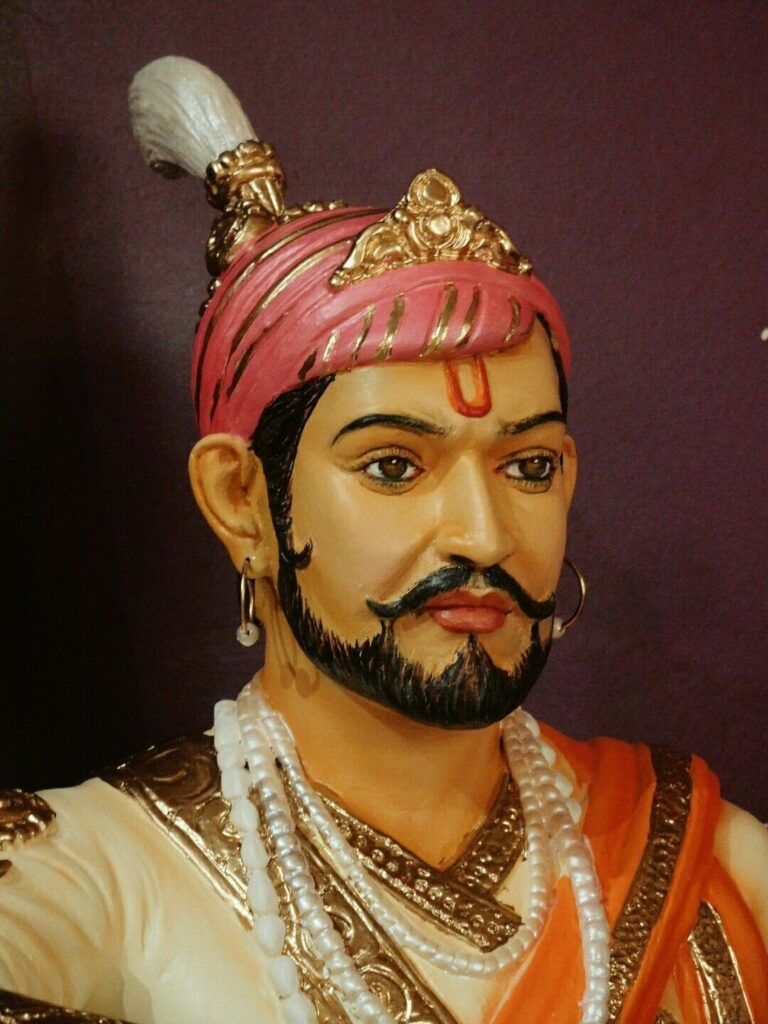
On 14 May 1657, the walls of Purandar Fort echoed with celebration. A son was born to Shivaji Maharaj, the rising Maratha warrior-king, and Saibai, his beloved queen. This child, named Sambhaji Maharaj, was not just a royal heir—he was destined to become a symbol of resistance, intellect, and sacrifice.
From the moment of his birth, Sambhaji Maharaj was surrounded by the pulse of revolution. His father, Shivaji Maharaj, was challenging the Mughal Empire and building a sovereign Maratha state. His mother, Saibai, was known for her grace and wisdom. Sambhaji Maharaj inherited both fire and finesse.
But his early life was not without pain. At just two years old, Sambhaji lost his mother. This emotional void shaped his personality—making him introspective, intense, and fiercely loyal. Raised in the shadow of war and politics, Sambhaji Maharaj was trained in swordsmanship, diplomacy, and Sanskrit. He was fluent in multiple languages and authored scholarly works, including Budhbhushanam, a treatise on ethics.
Yet, his journey was never smooth. Court politics, betrayal, and constant warfare tested his resolve. Despite being Shivaji’s chosen heir, Sambhaji Maharaj faced opposition from within his own family and ministers. But he rose above it all, eventually becoming the second Chhatrapati of the Maratha Empire.
His reign (1681–1689) was marked by relentless battles against the Mughals, Portuguese, Siddis, and Mysore rulers. He expanded Maratha influence, defended Swarajya, and refused to convert under torture—earning the title Dharmaveer.
Sambhaji Maharaj’s life was a blend of brilliance and brutality, courage and controversy. But above all, it was a life of uncompromising loyalty to his people and principles.
Table of Contents
🗣️ Sambhaji Maharaj’s Coronation Speech
🗓️ Date: 16 January 1681
📍 Location: Raigad Fort, Maharashtra
👥 Crowd: Royal council, Maratha sardars, military commanders, Brahmins, and citizens of Swarajya
🔱 Context
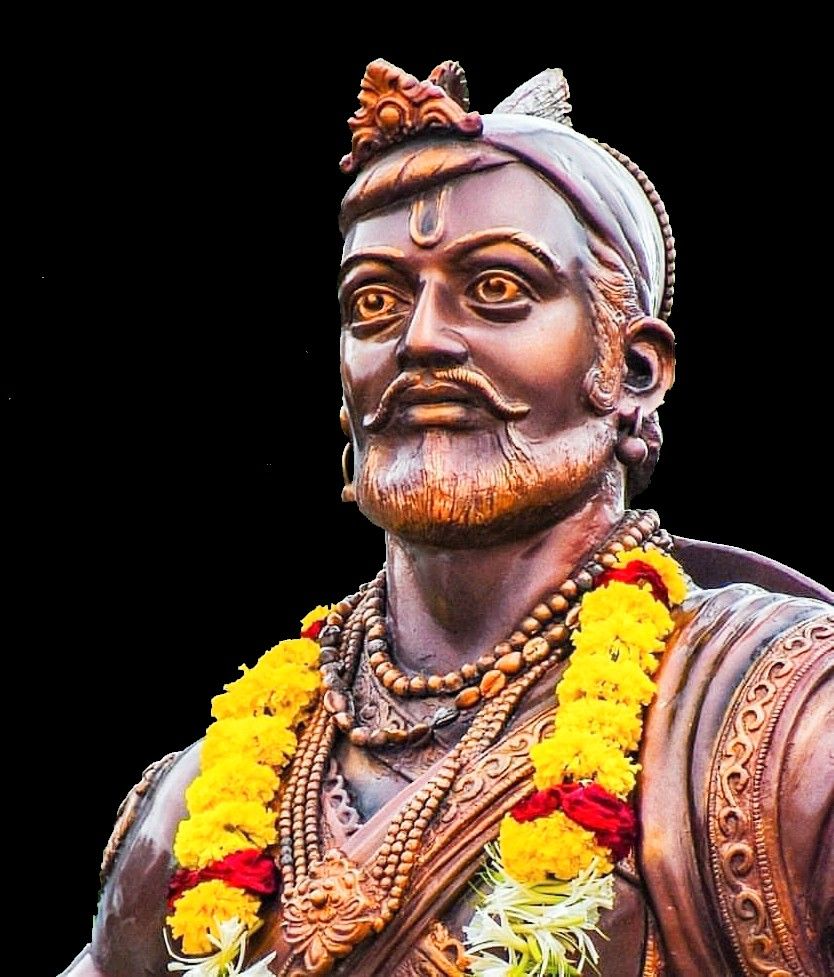
After the death of Shivaji Maharaj in 1680, Sambhaji faced political resistance from within his own family. But by early 1681, he had secured the throne and was officially crowned as Chhatrapati of the Maratha Empire. At Raigad Fort, in front of thousands of loyalists, he delivered a speech that reaffirmed his commitment to Hindavi Swarajya, Dharma, and Maratha pride.
🗣️ Reconstructed Excerpt (based on Marathi oral tradition and historical accounts)
“माझ्या पित्याने स्वराज्याची मशाल पेटवली, आता ती मशाल माझ्या हातात आहे. मी ती विझू देणार नाही. मुघल, पोर्तुगीज, सिद्दी, कोणताही शत्रू असो—स्वराज्याच्या रक्षणासाठी मी रक्ताचा शेवटचा थेंबही देईन.”
(“My father lit the torch of Swarajya. Now that torch is in my hands. I will not let it die. Be it Mughals, Portuguese, or Siddis—every drop of my blood will defend Swarajya.”)
🔥 Impact
- Unified the Maratha sardars under his leadership
- Declared war readiness against Aurangzeb’s Deccan campaign
- Reinforced the emotional bond between the king and his people
- Marked the beginning of one of the most defiant reigns in Indian history
While no full transcript survives, this coronation speech is remembered through ballads, folk songs, and oral retellings across Maharashtra. It remains a symbol of Maratha resilience, leadership under fire, and uncompromising loyalty to Dharma.
🏰 The Birth of Sambhaji Maharaj: A Legacy Begins
📜 Historical Context: A Kingdom in the Making
In 1657, the Maratha Empire was still in its formative phase. Shivaji Maharaj, a visionary warrior and strategist, was laying the foundation of Swarajya—a sovereign Hindu kingdom free from Mughal dominance. His wife, Saibai, was known for her wisdom, humility, and deep understanding of statecraft. Their union symbolized strength and grace.
On 14 May 1657, within the fortified walls of Purandar Fort, Saibai gave birth to a son—Sambhaji Maharaj. This was more than a royal birth. It was the arrival of a child who would inherit not just a throne, but a revolution.
🍼 Early Life at Purandar Fort
Purandar Fort, located near Pune, was a strategic stronghold of the Marathas. It was here that Sambhaji Maharaj spent his earliest years, surrounded by tales of valor, political intrigue, and cultural richness. The fort’s rugged terrain and military architecture became his playground and classroom.
Raised under the gentle care of Saibai, Sambhaji Maharaj was exposed to the values of dharma, discipline, and dignity. His mother’s death in 1659, when he was just two years old, left a deep emotional scar. This loss shaped his personality—making him introspective, resilient, and fiercely loyal.
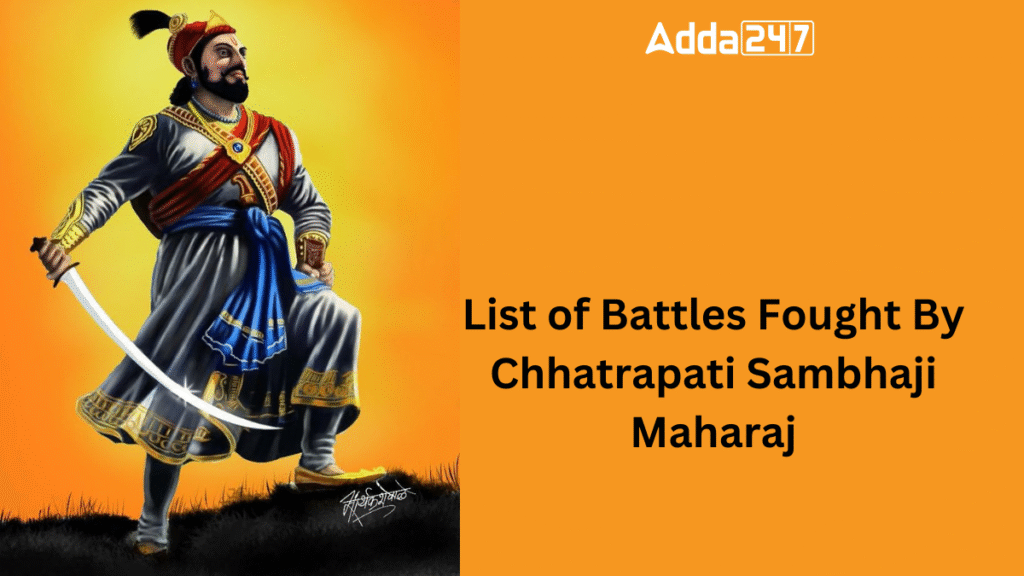
📚 Education and Intellectual Formation
Even as a child, Sambhaji Maharaj displayed exceptional intelligence. He was trained in:
- Sanskrit, the language of philosophy and governance
- Persian, the language of diplomacy and Mughal administration
- Marathi, the language of his people and poetry
His tutors included Brahmin scholars, military commanders, and spiritual guides. He was well-versed in the Vedas, Puranas, and political treatises. His later work, Budhbhushanam, reflected this intellectual depth.
Unlike many princes of his time, Sambhaji Maharaj was not content with ceremonial roles. He questioned traditions, debated ideas, and sought truth. His education was not just academic—it was philosophical.
🛡️ The Shadow of Shivaji Maharaj
Growing up as the son of Shivaji Maharaj was both a privilege and a pressure. Shivaji was not just a father—he was a legend in the making. His campaigns against the Mughals, Bijapur Sultanate, and Portuguese were reshaping Indian politics.
Sambhaji Maharaj watched his father build forts, forge alliances, and defy empires. He learned the art of guerrilla warfare, the importance of naval power, and the ethics of leadership. Shivaji Maharaj ensured that his son was not just trained in battle, but in statecraft and diplomacy.
In 1666, Sambhaji accompanied Shivaji to Agra, where they were placed under house arrest by Aurangzeb. The daring escape that followed became a defining moment in Sambhaji’s life. It taught him that freedom must be fought for, and that strategy is as vital as strength.
👑 Crown Prince and Court Politics
As Sambhaji Maharaj grew older, he was declared Yuvraj (Crown Prince) during Shivaji’s coronation in 1674. This was a public affirmation of his role as successor. However, court politics soon clouded his path.
Some ministers and relatives favored his half-brother Rajaram. They viewed Sambhaji’s assertiveness and intellect as threats. These tensions led to temporary imprisonment and political isolation.
But Sambhaji Maharaj remained undeterred. He continued to write, train, and plan. His resolve only grew stronger.
🌟 Symbolism of His Birth
The birth of Sambhaji Maharaj at Purandar Fort was symbolic on many levels:
- Geopolitical: Purandar was a symbol of Maratha resilience. His birth there linked him to the heart of Swarajya.
- Spiritual: Born to Saibai, known for her piety, and Shivaji, revered as a protector of dharma, Sambhaji embodied both devotion and defiance.
- Cultural: His birth marked the continuation of the Bhonsale dynasty, rooted in Marathi pride and Hindu ethics.
🧭 Legacy of the Birth
The legacy of Sambhaji Maharaj’s birth is not just historical—it is emotional. It reminds us that:
- Great leaders are born in moments of struggle
- True heirs inherit values, not just thrones
- The fire of revolution often begins in the cradle
His birth at Purandar Fort is commemorated across Maharashtra. Statues, poems, and festivals honor the day. Schools and institutions bear his name. His story is taught not just in textbooks, but in hearts.
🕯️ 1659: Saibai’s Passing & Sambhaji Maharaj’s Upbringing
🌸 The Final Days of Saibai: A Silent Storm at Purandar
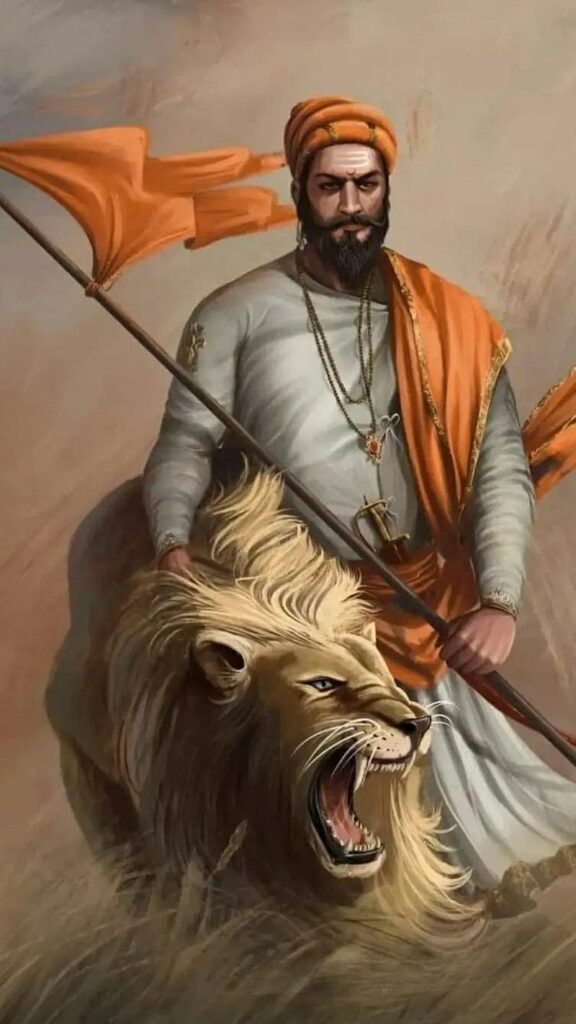
In the summer of 1659, the air at Purandar Fort was heavy—not with war, but with worry. Saibai, the chief consort of Shivaji Maharaj, had fallen gravely ill. Known for her grace, wisdom, and quiet strength, Saibai had been the emotional anchor of the Bhonsale household. Her illness came suddenly, and despite the best efforts of royal physicians, her condition worsened.
Inside the fort, Sambhaji Maharaj, her only son, played in the courtyard—unaware that his world was about to change forever. At just 1 year and 11 months, he was too young to understand loss, but old enough to feel the absence of warmth.
On a quiet morning in May 1659, Saibai breathed her last. The fort fell silent. The queen who had stood beside Shivaji through his formative campaigns was gone. Her death was not just a personal tragedy—it was a blow to the emotional fabric of the Maratha Empire.
🧭 Shivaji Maharaj’s Response: Duty Meets Grief
At the time of Saibai’s passing, Shivaji Maharaj was stationed at Raigad Fort, preparing defenses against the Bijapur Sultanate. The region was tense—incursions were expected, and fortifications at Rajgad and Raigad were being accelerated to protect the royal family.
Upon receiving the news, Shivaji Maharaj immediately halted his military planning and rushed to Purandar Fort. His return was swift, solemn, and filled with sorrow. He performed the last rites himself, honoring Saibai not just as his queen, but as his companion in building Swarajya.
This moment revealed the duality of Shivaji Maharaj’s character—a warrior in battle, a husband in grief. His decision to pause military operations and prioritize Saibai’s farewell showed the depth of their bond.
👶 Sambhaji Maharaj: A Child Without a Mother
For Sambhaji Maharaj, the loss of Saibai was life-altering. Though he was just shy of two years old, the absence of maternal care left a void that would shape his emotional and psychological development.
Raised in the royal court, Sambhaji Maharaj was surrounded by ministers, tutors, and attendants. But none could replace the nurturing touch of a mother. His early years were marked by loneliness, introspection, and a fierce attachment to those who showed him loyalty.
This emotional intensity would later define his leadership style—uncompromising, passionate, and deeply personal. Sambhaji Maharaj was not just a ruler—he was a son who had learned to carry grief with dignity.
👑 Jijabai’s Role: A Grandmother’s Shield
After Saibai’s death, Rajmata Jijabai, Shivaji’s mother, took charge of Sambhaji Maharaj’s upbringing. Jijabai was a formidable figure—steeped in dharma, strategy, and maternal wisdom. She had raised Shivaji Maharaj amidst political chaos and now took on the responsibility of shaping his heir.
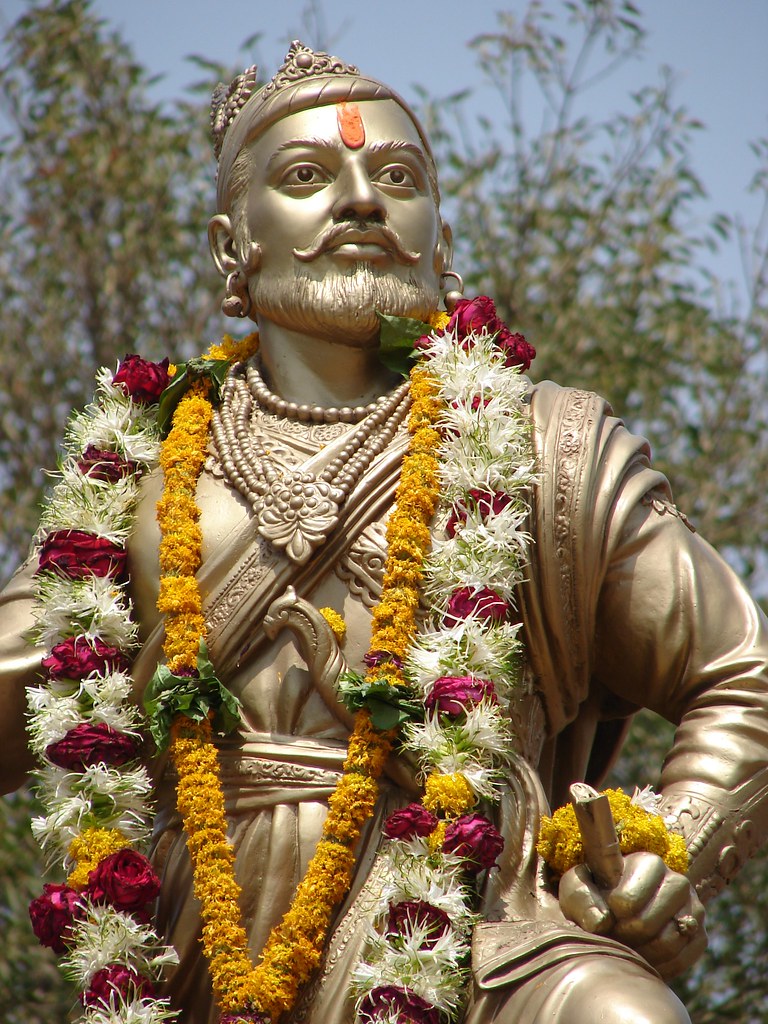
Under Jijabai’s guidance, Sambhaji Maharaj was taught:
- Sanskrit and Marathi literature
- Ethics and dharmashastra
- Military discipline and fort strategy
- Spiritual values and cultural pride
Jijabai instilled in him the belief that Swarajya was not just a political goal—it was a moral duty. Her influence gave Sambhaji Maharaj the emotional armor he needed to survive court politics and future betrayals.
🛡️ Fortifications and Family Safety
In the wake of Saibai’s death, Shivaji Maharaj intensified fortification efforts at Raigad and Rajgad. These forts were not just military assets—they were sanctuaries for his family. The loss of Saibai reminded him of the vulnerability of loved ones amidst war.
He ordered:
- Reinforced walls and secret escape routes
- Secure chambers for royal women and children
- Expanded granaries and water systems for sieges
These actions were not just strategic—they were emotional. Shivaji Maharaj was building a fortress not just for Swarajya, but for Sambhaji Maharaj’s future.
📚 Emotional Impact on Sambhaji Maharaj’s Character
The early loss of Saibai left Sambhaji Maharaj with a complex emotional landscape:
- Fierce loyalty to those he trusted
- Sharp intellect, shaped by solitude and study
- Unforgiving stance against betrayal
- Deep spiritual curiosity, often expressed in poetry and prose
His later writings, including Budhbhushanam, reflect a mind that had grappled with grief, power, and purpose. He was not just a warrior—he was a philosopher forged in pain.
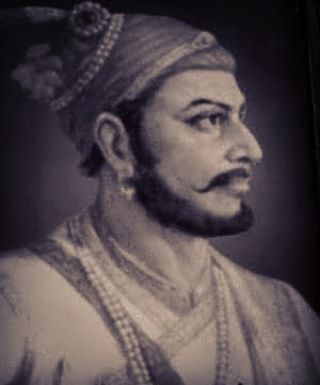
🌟 Legacy of This Moment
The death of Saibai and the early upbringing of Sambhaji Maharaj shaped the trajectory of the Maratha Empire. It influenced:
- Shivaji Maharaj’s strategic decisions
- Court dynamics and succession politics
- Sambhaji’s emotional resilience and leadership style
This moment reminds us that history is not just made in battles—it is shaped in bedrooms, courtyards, and moments of silence.
💍 The Marriage of Sambhaji Maharaj and Yesubai Shirke
📜 Historical Context: Why a Royal Marriage at Age 4?
In 1661, the Maratha Empire was still in its formative phase. Shivaji Maharaj was consolidating power across Maharashtra, facing threats from the Mughals, Bijapur Sultanate, and Portuguese forces. In this volatile landscape, political alliances through marriage were a time-tested strategy.
Sambhaji Maharaj, born in 1657, was just 4 years old when he was married to Yesubai Shirke, daughter of Pilajirao Shirke, a prominent noble from the Konkan region. The Shirke family had strong military assets, especially cavalry units, and controlled strategic coastal territories.
This marriage was designed to:
- Secure loyalty from the Shirke clan
- Strengthen Maratha influence in Konkan
- Ensure future military support from Shirke cavalry
Though Sambhaji was a child, the alliance was forward-looking—a seed planted for future stability.
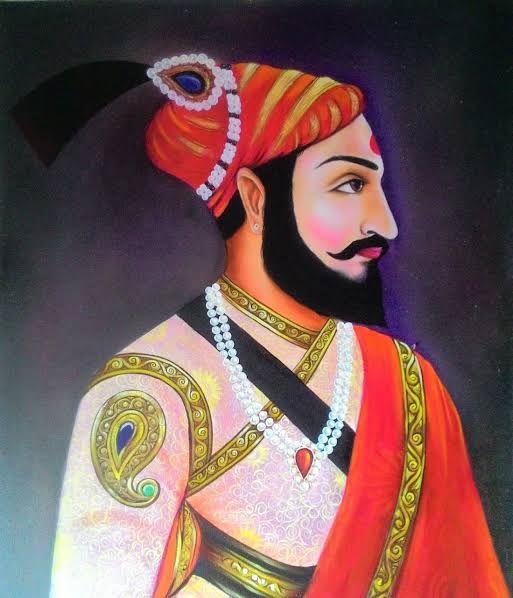
👑 The Ceremony: Royal Symbolism and Strategic Presence
The wedding took place with grandeur befitting royalty. Held at a Maratha stronghold, the ceremony was attended by key figures:
- Netaji Palkar – Commander of cavalry
- Moropant Pingle – Peshwa and strategist
- Hambirrao Mohite – Military general
- Annaji Datto – Chief secretary
- Baji Prabhu Deshpande – Legendary warrior
These attendees weren’t just guests—they were witnesses to a political pact. The rituals blended Hindu tradition with Maratha pride, symbolizing unity and legacy.
🌸 Yesubai Shirke: More Than a Queen
Born around 1658 in Shringarpur, Konkan, Yesubai Shirke was raised in a family steeped in valor and diplomacy. Though married young, she grew into a wise, composed, and politically astute woman.
As Sambhaji Maharaj matured, Yesubai became:
- His confidante in governance
- His partner in diplomacy
- The mother of Shahu Maharaj, future Chhatrapati
During Sambhaji’s reign, especially when he was away in battle, Yesubai made key political decisions, maintaining stability in the capital. Her role as Maharani of Swarajya was not symbolic—it was functional and formidable.
🧠 Emotional Bond and Intellectual Partnership
Despite the early age of marriage, historical records and letters suggest that Sambhaji Maharaj and Yesubai shared mutual respect and affection. He often consulted her on matters of state, and she supported his literary pursuits.
Their bond was tested during Sambhaji’s imprisonment and execution in 1689. Yesubai’s courage in protecting their son Shahu, and navigating Mughal captivity, reflects her emotional strength and strategic mind.
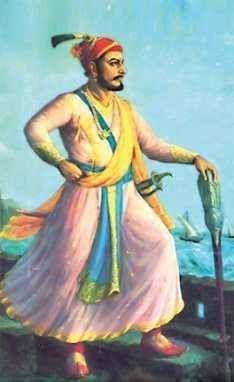
🌟 Legacy of the Union
The marriage of Sambhaji Maharaj and Yesubai Shirke was more than a royal tradition—it was a cornerstone of Maratha diplomacy. It:
- Cemented ties with coastal nobility
- Produced Shahu Maharaj, who would later restore Maratha power
- Showcased the role of women in Maratha politics
- Reflected the fusion of emotion and strategy in royal alliances
Yesubai later became Rajmata during Shahu’s reign, guiding the empire through transitions and challenges.
📜 12 June 1665: Treaty of Purandar & Sambhaji Maharaj’s First Political Recognition
🏰 Chapter 1: The Siege That Shaped Swarajya
In early 1665, the Mughal Empire launched a massive campaign against the rising Maratha power. Led by Mirza Raja Jai Singh I, the imperial forces laid siege to Purandar Fort, one of the strongest bastions of Shivaji Maharaj. The siege was brutal, and despite fierce resistance, the Marathas faced overwhelming odds.
Sambhaji Maharaj, just 8 years old, was present at Rajgad during this time. Though not on the battlefield, he was absorbing everything—the tension, the strategy, the emotional weight of leadership.
📜 Chapter 2: The Treaty of Purandar – Signed on 12 June 1665
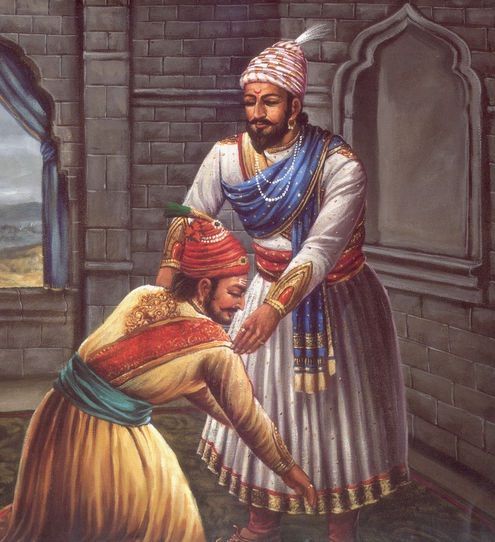
After weeks of negotiation, Shivaji Maharaj signed the Treaty of Purandar on 12 June 1665. The terms included:
- Ceding 23 forts to the Mughals
- Accepting Mughal suzerainty in certain regions
- Agreeing to send Sambhaji Maharaj to the Mughal court as a gesture of loyalty
This last clause was monumental. It marked Sambhaji Maharaj’s first official recognition by the Mughal Empire. His name was entered into the imperial daftar (register)—a symbolic move that acknowledged his future role in Deccan politics.
👶 Chapter 3: Sambhaji Maharaj’s Inclusion – A Child in the Eyes of an Empire
At age 8, Sambhaji Maharaj became part of a diplomatic chessboard. His inclusion in Mughal records was:
- A political gesture to bind the Bhonsale dynasty to Mughal interests
- A signal of succession, recognizing him as Shivaji’s heir
- A tool of psychological diplomacy, aiming to soften future resistance
But for Sambhaji, this was not just paperwork—it was the beginning of his political consciousness.
🧠 Chapter 4: Emotional Awakening – The Weight of a Name
Imagine being a child and hearing your name spoken in imperial circles. For Sambhaji Maharaj, this moment planted seeds of:
- Curiosity about power and politics
- Skepticism toward imperial diplomacy
- Pride in being recognized—but also pressure to live up to it
He began asking questions, observing court behavior, and internalizing the duality of diplomacy and resistance.
🛕 Chapter 5: Lessons from Shivaji Maharaj
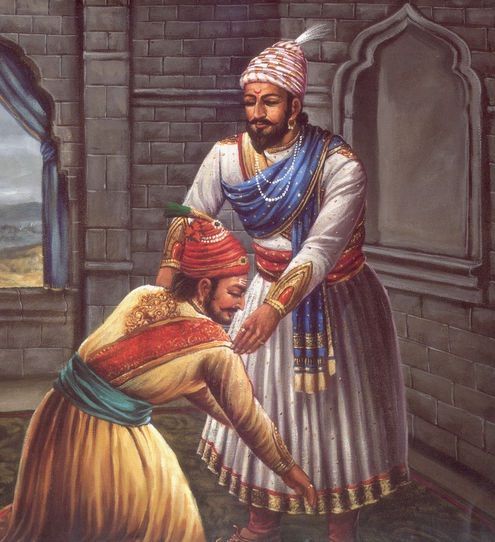
Shivaji Maharaj, though forced into compromise, used the treaty as a strategic pause. He taught Sambhaji:
- That diplomacy is sometimes necessary to preserve strength
- That names in treaties carry weight—but must be backed by action
- That true leadership means knowing when to fight and when to wait
These lessons would later define Sambhaji Maharaj’s reign, especially his refusal to bow to Mughal pressure.
📜 Chapter 6: Mughal Records and Symbolism
The Mughal daftar didn’t just record names—it recorded intentions. By including Sambhaji Maharaj, the empire hoped to:
- Influence his upbringing
- Create a psychological bond with the future Maratha ruler
- Use generational diplomacy to weaken Maratha resistance
But they underestimated the Bhonsale bloodline. Sambhaji would later reject imperial overtures, choosing freedom over favor.
⚔️ Chapter 7: Long-Term Impact on Sambhaji Maharaj’s Reign
The Treaty of Purandar shaped Sambhaji’s worldview:
- He saw treaties as temporary tools—not permanent solutions
- He prioritized military strength over negotiation
- He developed a deep mistrust of Mughal intentions
During his reign (1681–1689), Sambhaji Maharaj refused to convert, even under torture. His resistance was rooted in lessons learned from Purandar.
🌟 Final Reflection: The Birth of a Legacy
The Treaty of Purandar was a tactical retreat for Shivaji Maharaj—but for Sambhaji Maharaj, it was the beginning of his political identity. His name in Mughal records was not just ink—it was a prophecy of rebellion.
This moment reminds us that even a child, when named in history, begins to shape it. Sambhaji Maharaj’s journey from treaty mention to fearless Chhatrapati is a testament to legacy, resilience, and the fire of Swarajya.
🏰 1666: Imprisonment in Agra & Sambhaji Maharaj’s Ordeal
📜 Historical Context: A Diplomatic Trap
In the monsoon of August 1666, the Mughal emperor Aurangzeb extended an invitation to Shivaji Maharaj, under the guise of honoring him with royal titles and diplomatic recognition. The Maratha king, known for his strategic brilliance, accepted the invitation cautiously and traveled to Agra, accompanied by a small entourage—including his son Sambhaji Maharaj, his trusted tutor Pandit Ramchandra, and loyal bodyguard Jivaji Mahale.
At just 9 years old, Sambhaji Maharaj was stepping into the heart of the Mughal Empire—a place of grandeur, politics, and hidden daggers. What was meant to be a ceremonial visit quickly turned into a political ambush.
🔐 The Captivity at Agra Fort
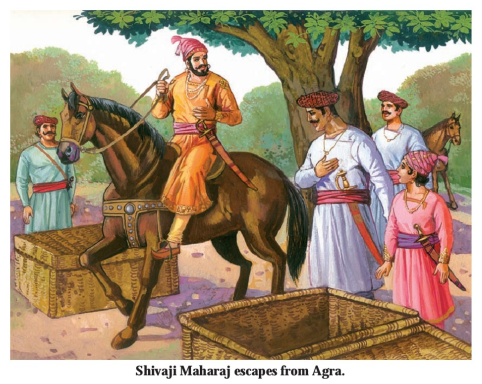
Upon arrival, Shivaji Maharaj was insulted in the Mughal court. He was seated among low-ranking officers, a deliberate act of humiliation orchestrated by Aurangzeb. Sambhaji Maharaj, standing beside his father, witnessed this betrayal firsthand. The young prince saw the pain in his father’s eyes, the tension in the room, and the cold calculation of imperial politics.
Soon after, the Maratha delegation was placed under house arrest inside Agra Fort. The quarters were heavily guarded, and communication with the outside world was restricted. Sambhaji Maharaj, separated from familiar surroundings, was now a captive in a hostile empire.
This experience was not just physical confinement—it was psychological warfare. The Mughal court hoped to break Shivaji’s spirit and intimidate his heir. But they underestimated the resolve of both father and son.
🧠 Sambhaji Maharaj’s Observations: A Child’s Awakening
For Sambhaji Maharaj, the Agra imprisonment was a brutal awakening. He saw:
- Diplomatic deception masked as royal hospitality
- Cultural arrogance in the Mughal court’s treatment of Marathas
- Strategic restraint in Shivaji’s response to insult and captivity
These observations planted seeds of rebellion in Sambhaji’s heart. He began to understand that power was not always honorable, and that freedom required vigilance, courage, and cunning.
His tutor, Pandit Ramchandra, continued his education inside the fort—teaching him Sanskrit verses, Persian etiquette, and the art of negotiation. But the most important lessons came from watching his father navigate captivity with dignity.
🛕 Shivaji Maharaj’s Strategy: Morale and Resistance
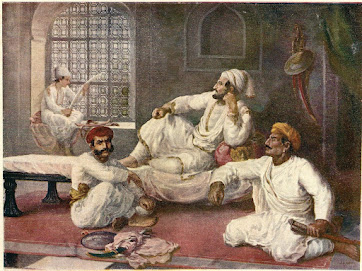
Despite being under house arrest, Shivaji Maharaj did not surrender mentally. He negotiated privileges:
- Books, to continue spiritual and strategic study
- A horse, to maintain martial discipline
- Permission to worship daily, preserving dharmic routine
These requests were not trivial—they were psychological anchors. They helped maintain morale, assert cultural identity, and prepare for escape. Sambhaji Maharaj saw his father use court etiquette as a weapon, turning captivity into a classroom of resistance.
🗡️ The Escape Plan: Seeds of Genius
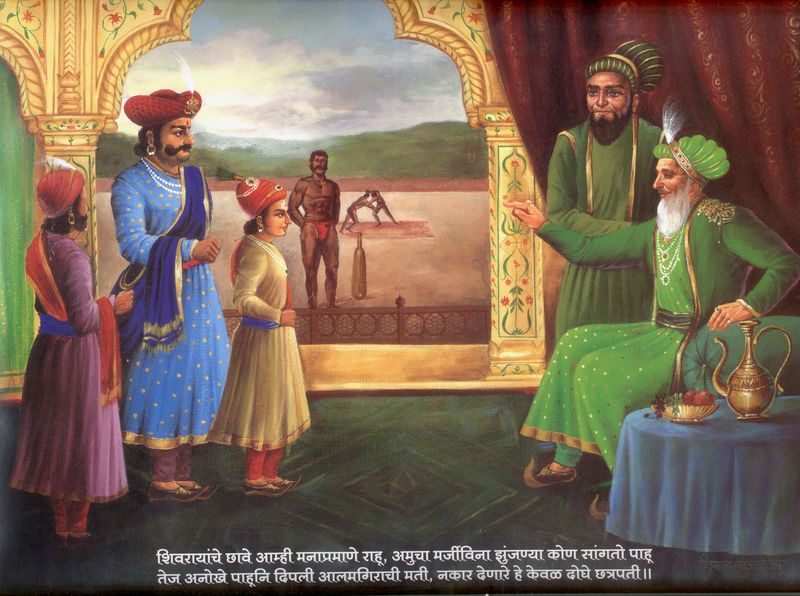
Over the weeks, Shivaji Maharaj began planning a daring escape. He feigned illness, reduced his public appearances, and built trust with guards. Eventually, he orchestrated a plan involving fruit baskets, disguises, and timed exits.
Sambhaji Maharaj, now deeply aware of the stakes, played his part with discipline and silence. The escape from Agra Fort became one of the most legendary episodes in Indian history—and Sambhaji Maharaj was at the heart of it.
This experience taught him:
- Strategy is born in silence
- Courage is not loud—it is precise
- Freedom is earned, not gifted
💔 Emotional Impact on Sambhaji Maharaj
The Agra ordeal left a lasting emotional imprint on Sambhaji Maharaj:
- He developed mistrust toward imperial diplomacy
- He became intensely loyal to his father and Swarajya
- He cultivated a sharp mind for political deception and military planning
These traits would later define his reign. As Chhatrapati, Sambhaji Maharaj would face betrayal, captivity, and torture—but he would never forget the lessons of Agra.
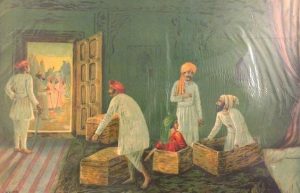
🌟 Legacy of the Agra Imprisonment
The 1666 imprisonment was a turning point in Maratha history. It:
- Cemented Shivaji Maharaj’s reputation as a master strategist
- Shaped Sambhaji Maharaj’s worldview as a future ruler
- Exposed the fragility of Mughal diplomacy
- Inspired generations with the story of escape and defiance
Sambhaji Maharaj, though only a child, emerged from Agra not broken—but awakened.
🏰 1666: Escape from Agra & Sambhaji Maharaj’s Role
🧺 1. Secret Basket Disguise: Innocence as Strategy
On the night of 17 August 1666, Shivaji Maharaj and Sambhaji Maharaj concealed themselves inside large fruit baskets, traditionally used for sweets and dry fruits. These baskets were carried by trusted aides Balaji Avji and Bahiroji Pingale, who had rehearsed the plan for days.
Sambhaji Maharaj, though only 9, understood the gravity of the moment. His innocent demeanor helped calm suspicious guards. He didn’t panic. He didn’t cry. Instead, he played his part with quiet courage—a child masking a revolution beneath his silence.
Meanwhile, Pandit Ramchandra, Sambhaji’s tutor, negotiated the inspection process, distracting guards with religious discourse and etiquette. The escape was not just physical—it was psychological warfare.
🌙 2. Timing & Route: Whispered Directions in the Dark
The baskets were moved under the cover of darkness. As the procession paused near checkpoints, Sambhaji Maharaj whispered directions, having memorized Mughal patrol patterns. His observations over weeks of captivity became tactical intelligence.
This was not just a child escaping—this was a strategist in the making. His calm presence allowed Shivaji Maharaj to focus on execution rather than fear. The route was carefully chosen to avoid Mughal patrols, leading toward Mathura.
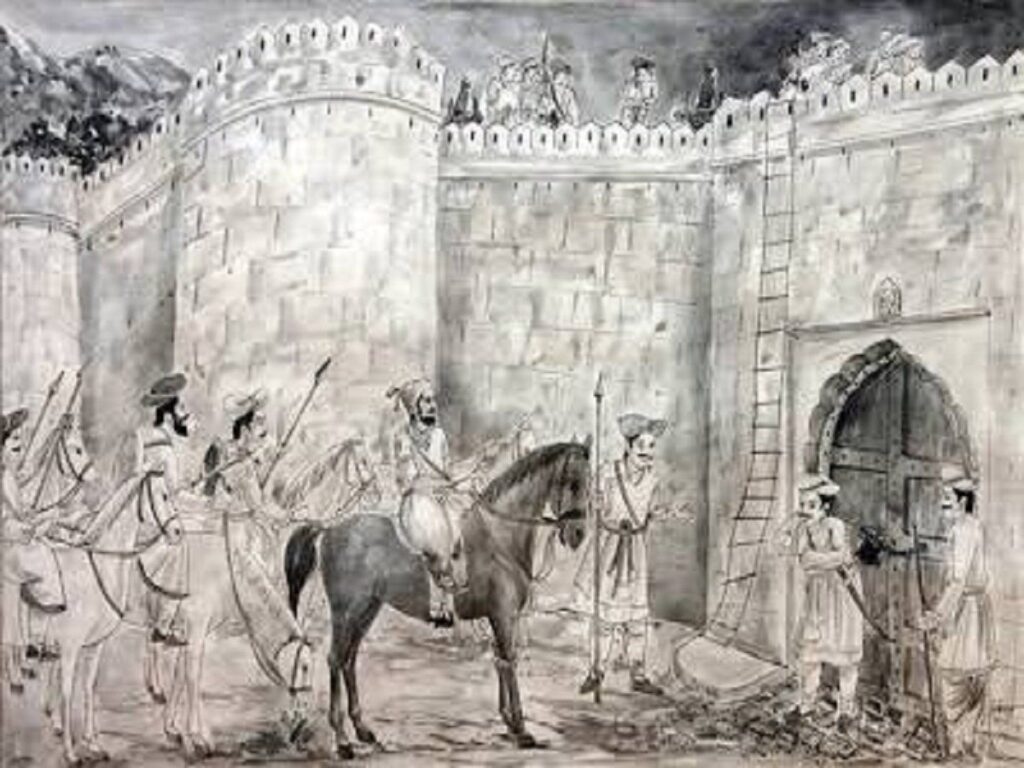
🎭 3. Diversion & Deception: The Art of Distraction
To ensure success, a false alarm was staged at the opposite gate of Agra Fort. Mughal guards rushed to investigate the noise, allowing the real escape to proceed unnoticed.
Sambhaji Maharaj, having studied the guards’ routines, signaled the timing for the diversion. His role was subtle but critical—a child guiding warriors through shadows.
This moment revealed the depth of his observational skills and his ability to act under pressure. It was the beginning of his transformation from prince to protector.
🐎 4. First Leg to Mathura: Morale in Motion
The escape party, led by Jivaji Mahale, rode swiftly toward Mathura, reaching within three nights. The journey was grueling, filled with uncertainty and danger.
During this leg, Sambhaji Maharaj recited verses from the Bhagavad Gita, keeping morale high. His spiritual grounding and emotional maturity helped stabilize the group. He was not just a passenger—he was a source of strength.
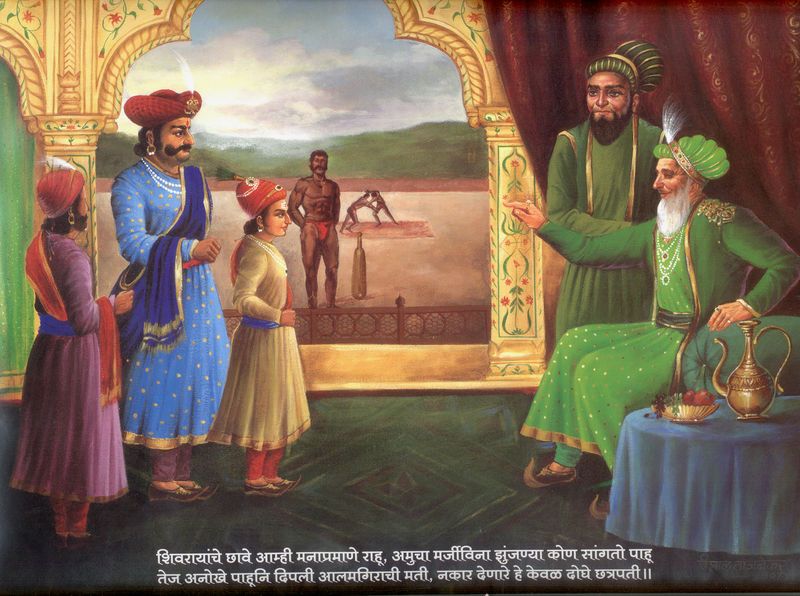
🏞️ 5. Reunion in Maharashtra: The Return of the Flame
After weeks of cautious travel via the Yamuna and Chambal rivers, the party reached Rajgurunagar, and eventually Raigad Fort. The reunion was emotional. The Maratha court had feared the worst.
Sambhaji Maharaj’s composed presence throughout the journey ensured that Shivaji Maharaj remained focused on strategy, not fear. Their bond deepened—not just as father and son, but as co-architects of Swarajya.
🌟 Legacy of the Escape
The Agra escape became a legendary chapter in Maratha history. It:
- Humiliated Aurangzeb, exposing Mughal vulnerability
- Elevated Shivaji Maharaj’s status as a master strategist
- Introduced Sambhaji Maharaj as a future leader shaped by fire and finesse
This moment taught Sambhaji Maharaj that freedom is earned through silence, sacrifice, and sharp thinking. It was the beginning of his lifelong resistance against tyranny.
🏰 1670s: Training Under Shivaji Maharaj’s Guidance
🏰 Chapter 1: Raigad Fort – The Warrior’s Forge
Theme: Military training under Netaji Palkar
Between 1670 and 1672, Sambhaji Maharaj, then aged 13–15, was stationed at Raigad Fort, the capital of the Maratha Empire. This wasn’t just a royal residence—it was a crucible of strategy, resistance, and leadership. Under the mentorship of Netaji Palkar, the empire’s cavalry commander, Sambhaji Maharaj began his transformation from prince to warrior.
🗡️ Training Highlights:
- Swordsmanship and archery: Practiced daily in the fort’s open courtyards, often blindfolded to sharpen reflexes.
- Guerrilla warfare: Learned the art of ambush, retreat, and terrain advantage—skills that would later define Maratha tactics.
- Elephant command and cavalry drills: Mastered coordination between foot soldiers and mounted units.
- Mock sieges: Led simulated attacks on Raigad’s bastions, often surprising his mentors with counter-ambushes.
🧠 Emotional Growth:
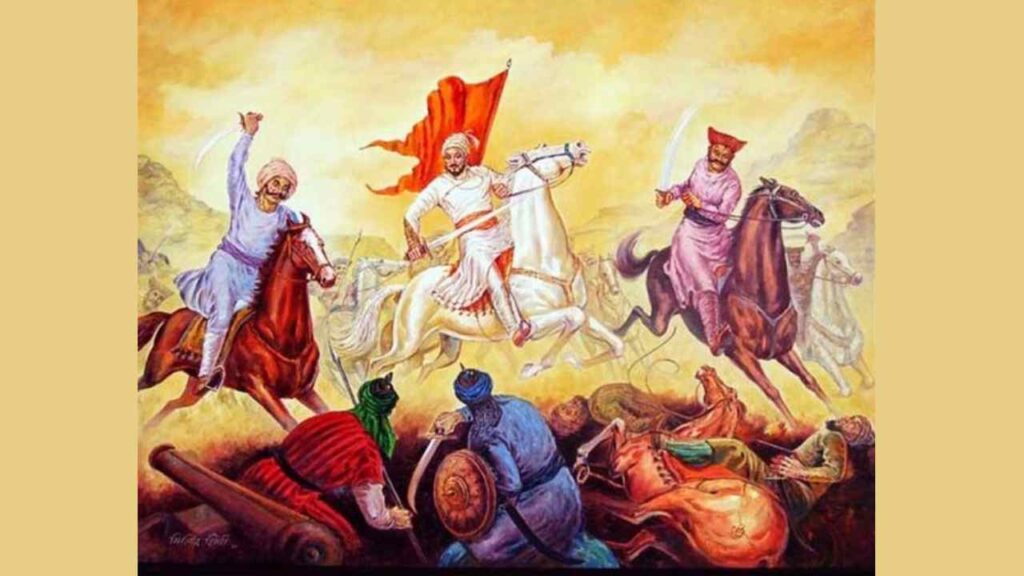
Sambhaji Maharaj wasn’t just learning how to fight—he was learning how to lead. Netaji Palkar often tested his patience, decision-making, and ability to inspire troops. By age 15, Sambhaji was already being called Yudh Pravartak—the initiator of war.
🏯 Chapter 2: Rajgad Fort – The Administrator’s Mind
Theme: Statecraft and revenue administration
Between 1672 and 1674, Sambhaji Maharaj, now aged 15–17, shifted his training base to Rajgad Fort—a fortress known not just for its military strength but for its role as the administrative heart of the Maratha Empire before Raigad. Here, Sambhaji’s education pivoted from battlefield tactics to the intricacies of governance.
🧾 Mentorship Under Moropant Trimbak Pingle
Moropant Pingle, the Peshwa (Prime Minister) of Shivaji Maharaj, was a master of revenue systems, land management, and political negotiation. Under his guidance, Sambhaji Maharaj learned:
- Chauth and Sardeshmukhi collection: Understanding the Maratha taxation model, which demanded tribute from neighboring territories in exchange for protection.
- Land revenue audits: Reviewing village records, crop yields, and tax ledgers.
- Administrative hierarchy: Studying the roles of Deshmukhs, Patils, and Karkuns in rural governance.
- Budgeting and treasury management: Learning how to allocate resources for forts, armies, and public welfare.
Moropant often gave Sambhaji real-time challenges—like resolving disputes between village heads or drafting letters to coastal chieftains. These exercises sharpened his diplomatic tone and fiscal judgment.
📜 Exposure to the Ashtapradhan Mandal
Rajgad was also where Sambhaji Maharaj observed the Ashtapradhan Mandal—Shivaji’s council of eight ministers—in action. He attended meetings, studied decision-making processes, and even participated in mock sessions.
This exposure taught him:
- Consensus-building among diverse voices
- Crisis response during famines or invasions
- Legal frameworks for justice and punishment
- Strategic planning for fort development and troop movement
By age 17, Sambhaji Maharaj could draft policy memos, evaluate land disputes, and negotiate trade routes—all while maintaining the dignity of a future Chhatrapati.
🧠 Emotional Intelligence in Governance
Rajgad wasn’t just about numbers—it was about people. Sambhaji Maharaj learned to:
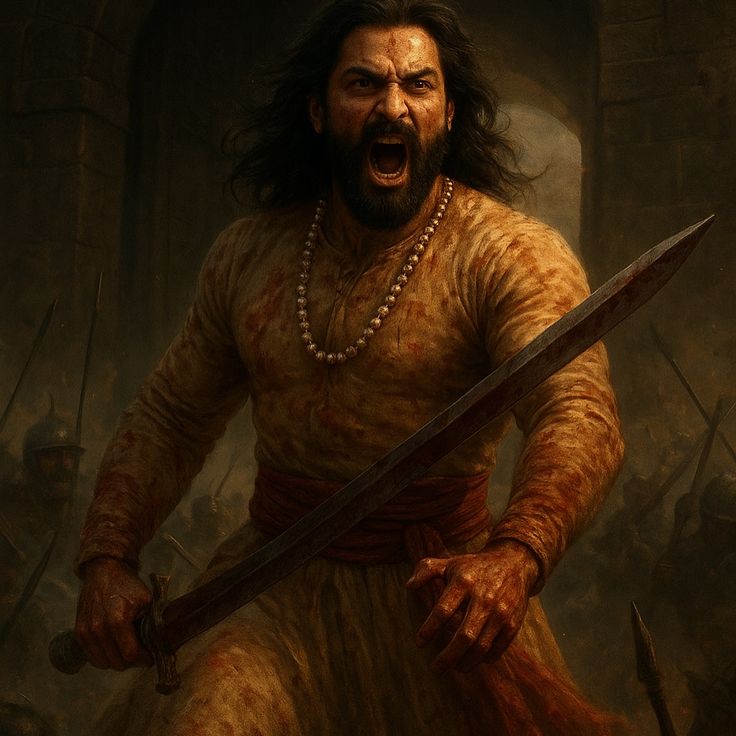
- Read the mood of the masses
- Balance justice with compassion
- Recognize the difference between loyalty and flattery
He often visited nearby villages incognito, speaking to farmers, traders, and temple priests. These interactions grounded him in grassroots realities, making him a ruler who understood both palace politics and peasant pain.
🏯 Chapter 3: Purandar Fort – The Diplomat’s Discipline
Theme: Language mastery, diplomacy, and Mughal court protocols
Keyword Focus: Sambhaji Maharaj
Between 1673 and 1675, Sambhaji Maharaj, now aged 16–18, continued his training at Purandar Fort—a site known not just for its strategic importance, but for its role in treaties and negotiations. This was the fort where Shivaji Maharaj had signed the Treaty of Purandar with the Mughals in 1665. Now, it became the classroom where Sambhaji would learn the art of diplomacy.
📚 Mentors of Multilingual Mastery
At Purandar, Sambhaji Maharaj studied under two brilliant minds:
- Pandit Ramchandra: A master of Sanskrit, Devanagari literature, and dharmic philosophy. He taught Sambhaji how to use language as a tool of persuasion and cultural pride.
- Anantaji Atish: A scholar of Persian and Arabic, well-versed in Mughal court etiquette. He trained Sambhaji in diplomatic writing, ceremonial conduct, and intercultural negotiation.
Together, they helped Sambhaji Maharaj become a polyglot diplomat, fluent in the languages of both allies and adversaries.
🗣️ Languages Learned at Purandar
During this phase, Sambhaji Maharaj mastered:
- Persian: The official language of Mughal administration
- Arabic: For religious and diplomatic texts
- Urdu: For communication with northern chieftains
- Kannada and Telugu: For southern alliances
- Gujarati: For trade and coastal diplomacy
He didn’t just learn to speak—he learned to write letters, draft treaties, and compose poetry in these languages. His linguistic versatility made him a formidable presence in any court.
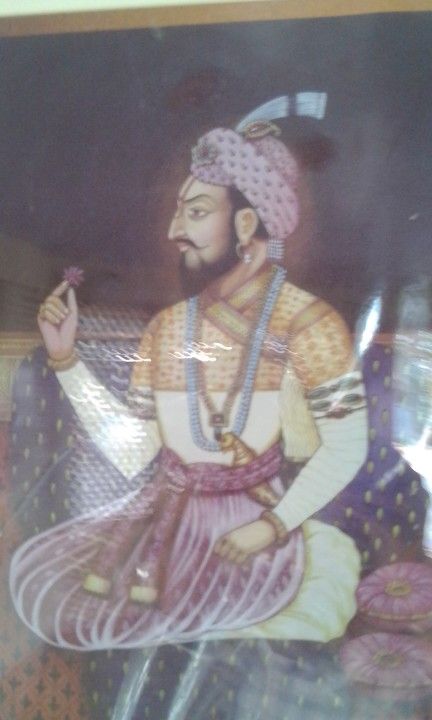
🕊️ Diplomatic Training Highlights
- Mughal Protocols: Learned how to navigate imperial hierarchy, seating arrangements, and gift exchanges.
- Treaty Drafting: Practiced writing formal agreements with Mysore, Bijapur, and Portuguese envoys.
- Court Etiquette: Trained in gestures, attire, and speech patterns appropriate for different cultures.
- Spycraft and Messaging: Studied how to encode messages, use metaphors, and hide intent in poetry.
Sambhaji Maharaj often surprised his mentors by rephrasing Mughal edicts into Maratha poetic forms, blending diplomacy with cultural assertion.
🧠 Emotional Intelligence in Diplomacy
Purandar taught Sambhaji Maharaj that diplomacy is not submission—it’s strategy. He learned to:
- Read body language and tone
- Detect hidden agendas in polite speech
- Use silence as a weapon
- Balance pride with pragmatism
He once defused a tense negotiation with a Portuguese envoy by quoting a Persian couplet that subtly mocked colonial arrogance—a moment that earned him quiet applause from Shivaji Maharaj himself.
📚 Chapter 4: Language Mastery – The Scholar Prince
Theme: Linguistic brilliance and diplomatic versatility
While most royal heirs were trained in warfare alone, Sambhaji Maharaj was sculpted into a polyglot philosopher. His linguistic journey was not just academic—it was strategic. Every language he mastered became a weapon in diplomacy, a bridge to alliances, and a canvas for his literary genius.
🗣️ Timeline of Language Mastery
| Age | Languages Mastered | Purpose & Use |
| 5–10 yrs | Marathi, Sanskrit, Hindi | Cultural grounding, dharmic texts |
| 11–13 yrs | Persian, Arabic | Mughal diplomacy, court correspondence |
| 14–16 yrs | Urdu, Kannada | Southern alliances, Mysore negotiations |
| 17–19 yrs | Telugu, Gujarati | Coastal trade, regional treaties |
| 20–22 yrs | Turkish, Greek (intro) | Exposure to global politics |
| 23+ yrs | Dutch, English (basic) | European trade, colonial awareness |
Sambhaji Maharaj didn’t just learn to speak—he learned to write, debate, and compose in these languages. His letters to Mysore chiefs, Persian couplets, and Marathi edicts reflect a mind that could think across cultures.
✍️ Chapter 5: Literary Works – The Philosopher King
Theme: Grantha-by-grantha analysis of Sambhaji Maharaj’s writings
Keyword Focus: Sambhaji Maharaj
Beyond the battlefield, Sambhaji Maharaj was a prolific author. His writings reveal a ruler who grappled with ethics, governance, and legacy—not just through action, but through reflection.
📘 Major Works by Age
- Beginnings of Persian Correspondence (Age 12–13)
- Early diplomatic drafts to Mughal officials.
- Showed command over Persian idioms and etiquette.
- Drafts of Letters to Mysore Chiefs (Age 15–16)
- Negotiated alliances and trade routes.
- Blended Kannada phrases with Maratha tone.
- Nrupalini (Age 18)
- A poetic exploration of royal virtues.
- Compared rulers across Indian dynasties.
- Vachanavali (Age 21)
- A compendium of edicts and moral instructions.
- Used for training ministers and commanders.
- Raja Vivek (Age 24)
- A political treatise on leadership and justice.
- Cited examples from Mahabharata and Arthashastra.
- Navaratna Grantha (Age 26)
- A collection of nine essays on governance, ethics, and diplomacy.
- Considered his intellectual legacy.
🧠 Famous Work: Buddhbhushan
At age 25, Sambhaji Maharaj composed Buddhbhushan—a Marathi philosophical treatise that explored:
- Ethics of kingship
- Moral dilemmas in warfare
- Justice and dharma in administration
- Spiritual grounding of statecraft
Drawing from Manusmriti, Mahabharata, and Kamandakiya Nitisar, he curated verses that offered timeless guidance. Buddhbhushan is not just a book—it’s a mirror into the soul of a ruler who valued truth over tyranny.
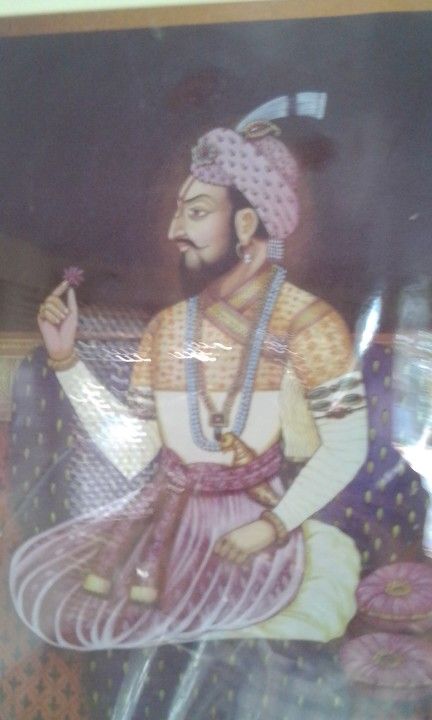
❤️ Chapter 6: Emotional Evolution – The Fire Within
Theme: Personal growth, emotional resilience, and psychological depth
Behind the armor and intellect of Sambhaji Maharaj was a soul forged in pain, pride, and purpose. His emotional journey was as intense as his military campaigns. From losing his mother Saibai at age 2 to witnessing betrayal and captivity, Sambhaji’s inner world was a battlefield of its own.
💔 Early Loss and Emotional Depth
The death of Saibai in 1659 left Sambhaji Maharaj motherless before he could form lasting memories. Raised by Jijabai, he received love—but the void remained. This early trauma made him:
- Fiercely loyal to those he trusted
- Unforgiving toward betrayal
- Emotionally intense, often expressing himself through poetry and debate
His writings, especially Nrupalini and Raja Vivek, reveal a ruler who grappled with grief, justice, and identity—not just as a king, but as a son.
🧠 Psychological Maturity
By age 17, Sambhaji Maharaj had already faced:
- Political isolation due to court conspiracies
- Imprisonment and escape from Agra
- Pressure to prove himself as Shivaji’s heir
These experiences sharpened his emotional intelligence. He learned to:
- Read intentions behind words
- Control his reactions in hostile environments
- Channel pain into purpose
His ability to remain composed during tense negotiations and brutal warfare was not just training—it was emotional mastery.
🕊️ Compassionate Leadership
Despite his fierce reputation, Sambhaji Maharaj was known to:
- Pardon repentant enemies
- Support poets and scholars
- Protect temples and cultural institutions
He believed that a ruler must balance sword and scripture, and that compassion is not weakness—it’s wisdom.
🧠 Chapter 7: Strategic Brilliance – The Architect of Resistance
Theme: Tactical genius, leadership style, and legacy of warfare
If Shivaji Maharaj was the founder of Swarajya, Sambhaji Maharaj was its defender. His strategic brilliance was evident in every campaign, alliance, and decision he made as Chhatrapati.
⚔️ Military Campaigns
During his reign (1681–1689), Sambhaji Maharaj led campaigns against:
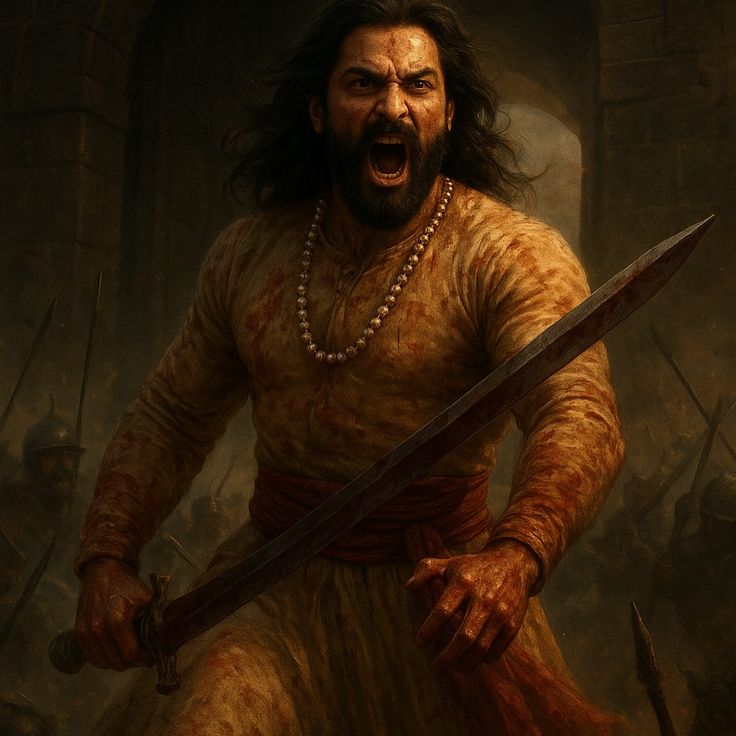
- Aurangzeb’s Mughal forces
- Portuguese in Konkan
- Siddi of Janjira
- Mysore rulers in the south
He used:
- Guerrilla tactics in hilly terrain
- Naval raids along the western coast
- Psychological warfare, including misinformation and symbolic gestures
His ability to adapt, improvise, and strike unpredictably made him a nightmare for imperial forces.
🧭 Leadership Style
Sambhaji Maharaj’s leadership was marked by:
- Direct involvement in planning and execution
- Trust in loyal commanders, but strict discipline
- Use of literature and symbolism to inspire troops
- Rapid decision-making, especially in crisis
He was not a distant ruler—he was on the frontlines, often disguised, leading by example.
📜 Legacy of Strategy
His strategic legacy includes:
- Strengthening Maratha naval power
- Expanding fort networks
- Codifying military protocols
- Training successors in ethics and warfare
Even in captivity, Sambhaji Maharaj refused to convert, choosing death over dishonor. His final act was not just defiance—it was strategic martyrdom, designed to ignite resistance.
🌟 Final Reflection
Sambhaji Maharaj was more than a warrior—he was a philosopher, a poet, a strategist, and a son of Maharashtra whose legacy continues to roar through forts, festivals, and hearts.
His life teaches us that:
- Pain can be power
- Strategy is born from silence and study
- Legacy is built not by survival, but by sacrifice
👑 Sambhaji Maharaj’s Yuvraj Abhishek at Raigad Fort
Sources: Bharat Articles – Shivaji Maharaj Rajyabhishek, Rohan Vishwas Jadhav – Coronation Timeline, Bharat Ke Wow – Shivaji Maharaj’s Coronation
📜 Chapter 1: The Day After the Empire Was Born
On 5 June 1674, Shivaji Maharaj was coronated as Chhatrapati at Raigad Fort, officially founding the Maratha Empire. The next day, 6 June 1674, the spotlight turned to his son—Sambhaji Maharaj.
At just 17 years old, Sambhaji Maharaj was declared Yuvraj, the Crown Prince of Swarajya. This wasn’t just succession—it was a declaration of continuity, courage, and conviction.
🏰 Chapter 2: Raigad Fort – The Stage of Sovereignty
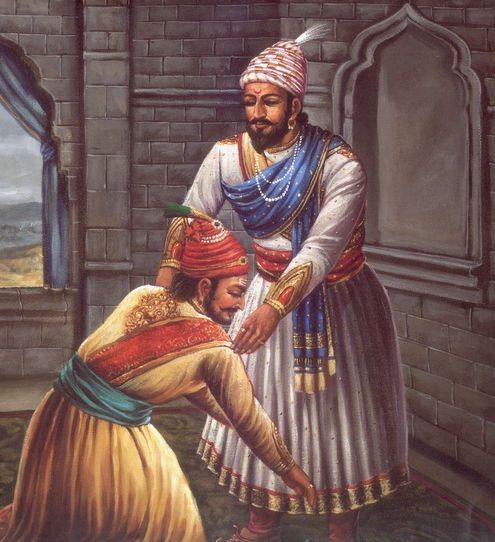
The ceremony took place at Raigad Fort, the newly established capital of the Maratha Empire. The fort was decorated with:
- Flags bearing the Bhonsale insignia
- Sacred water from rivers across India
- A golden throne weighing over 1.2 tons
- Vedic chants by over 1000 Brahmins
Sambhaji Maharaj, dressed in royal saffron robes, stood beside his father as the rituals began. The air was thick with emotion, pride, and anticipation.
🧠 Chapter 3: Symbolism of the Yuvraj Title
The title of Yuvraj was not just ceremonial—it carried deep meaning:
- It affirmed Sambhaji Maharaj’s legitimacy as heir
- It recognized his training in warfare, diplomacy, and administration
- It signaled to allies and enemies that Swarajya had a future beyond Shivaji Maharaj
For Sambhaji Maharaj, this was a moment of transformation—from student to successor, from prince to protector.
📚 Chapter 4: The Journey to Yuvraj
Before this day, Sambhaji Maharaj had:
- Escaped captivity in Agra (1666)
- Trained under Netaji Palkar, Moropant Pingle, and Pandit Ramchandra
- Mastered multiple languages including Sanskrit, Persian, and Arabic
- Composed early literary works like Beginnings of Persian Correspondence
His journey was marked by discipline, intellect, and emotional resilience. The Yuvraj Abhishek was a recognition of these qualities.
🕊️ Chapter 5: Emotional Undercurrents
The ceremony was not without emotion. Shivaji Maharaj, known for his stoic leadership, was visibly moved. He saw in Sambhaji:
- A reflection of his own youth
- A warrior shaped by hardship
- A son ready to carry the weight of Swarajya
Sambhaji Maharaj, in turn, bowed to his father—not just in respect, but in silent promise.
⚔️ Chapter 6: Political Implications
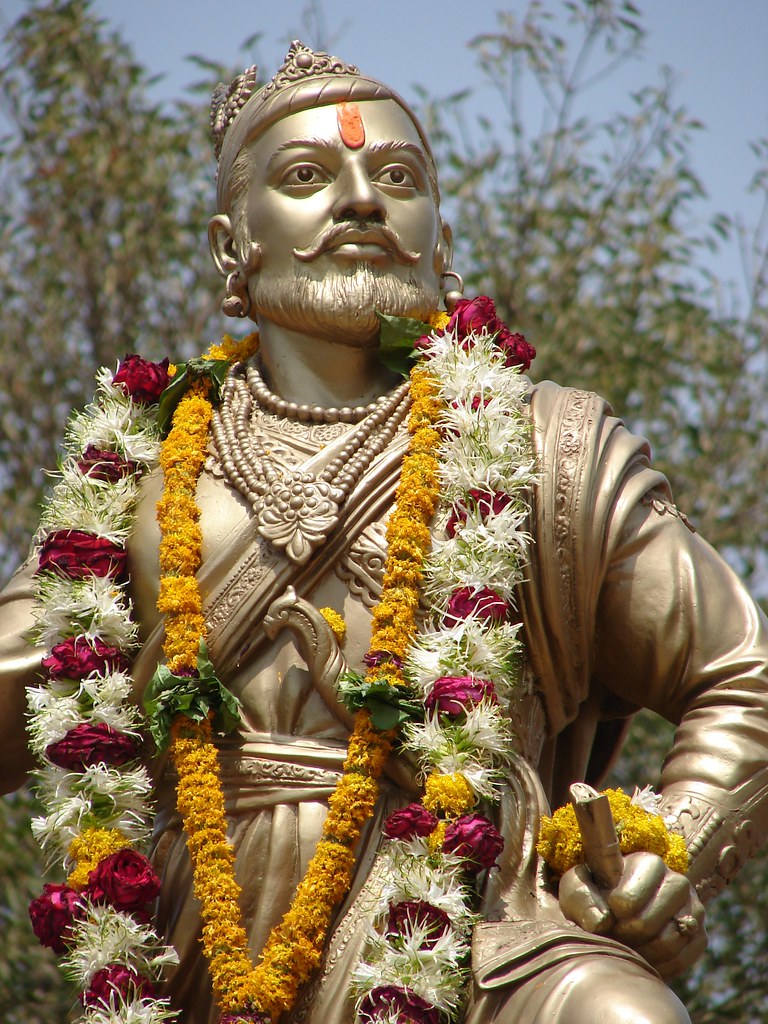
The declaration of Sambhaji Maharaj as Yuvraj sent ripples across the subcontinent:
- Maratha sardars reaffirmed their loyalty
- Mughal spies noted the succession with concern
- Southern allies saw stability in Maratha leadership
It was a strategic move to consolidate power, unify factions, and prepare for future expansion.
🌟 Chapter 7: Legacy of the Ceremony
The Yuvraj Abhishek of Sambhaji Maharaj became a cornerstone of Maratha history. It:
- Cemented his role as future Chhatrapati
- Inspired generations with the image of a young prince ready to lead
- Marked the beginning of a legacy that would defy empires and endure centuries
Even today, 6 June 1674 is remembered not just for Shivaji’s coronation—but for Sambhaji Maharaj’s emergence as the soul of Swarajya.
🕊️ Kalashabhishek of Sambhaji Maharaj (23 March 1678): A Ritual of Restoration
📜 Chapter 1: The Background – Conflict and Exile
In the years leading up to 1678, Sambhaji Maharaj had experienced intense ideological conflict with his father Shivaji Maharaj. Disagreements over succession planning, administrative reforms, and Mughal diplomacy led to Sambhaji’s temporary exile to Pratapgad.
During this period, Sambhaji Maharaj:
- Continued training in warfare and diplomacy
- Composed literary works reflecting his emotional state
- Maintained correspondence with loyal commanders like Netaji Palkar
Though physically distant, Sambhaji remained spiritually and strategically connected to Swarajya.
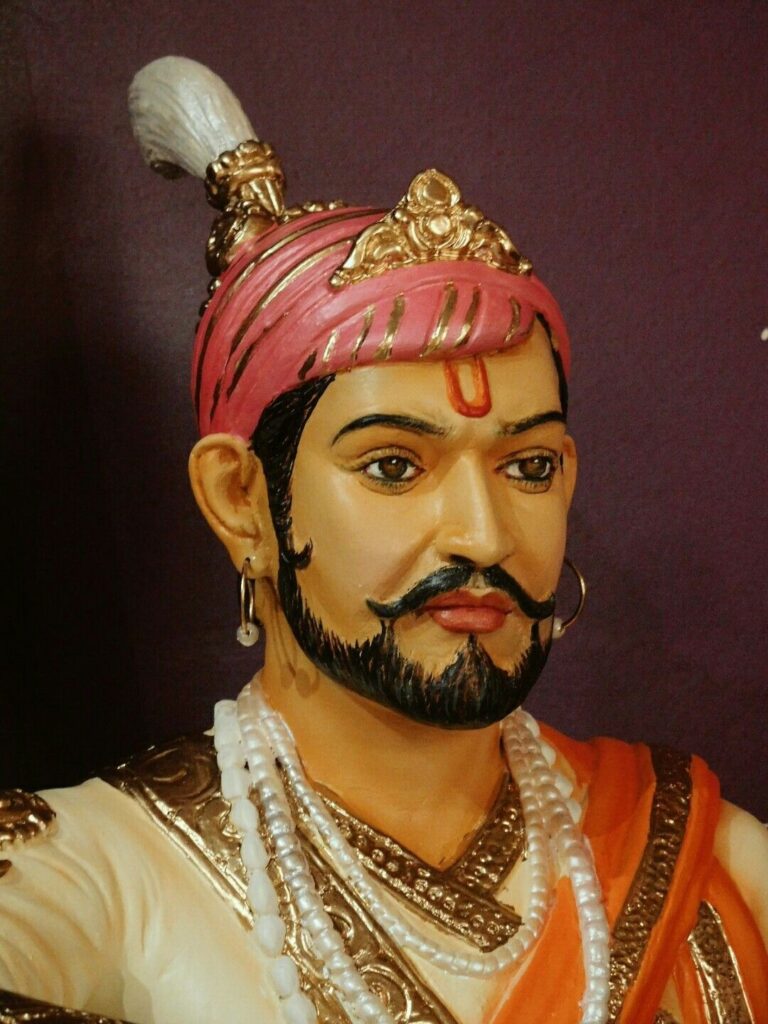
🏰 Chapter 2: Return to Raigad – A Prince Reinstated
By early 1678, external threats—including Mughal advances—forced Shivaji Maharaj to reconsider. Recognizing Sambhaji’s strategic brilliance and emotional maturity, he invited his son back to Raigad Fort.
But this return wasn’t just political—it required ritual purification. In Hindu tradition, exile or conflict can create spiritual imbalance. To restore harmony, a Kalashabhishek was performed.
🕉️ Chapter 3: What Is Kalashabhishek?
Kalashabhishek is a Vedic ritual involving:
- Sacred water from rivers across India, stored in ceremonial pots (kalash)
- Chanting of mantras by Brahmins to invoke divine blessings
- Pouring of water over the individual’s head, symbolizing purification and renewal
For Sambhaji Maharaj, this ritual meant:
- Cleansing past tensions and emotional wounds
- Reaffirming his dharmic role as Yuvraj
- Preparing spiritually for future leadership
It was a moment of rebirth—not just of status, but of soul.
👑 Chapter 4: The Ceremony at Raigad Fort
Held on 23 March 1678, the Kalashabhishek was attended by:
- Shivaji Maharaj, who personally oversaw the rituals
- Yesubai, Sambhaji’s wife, offering prayers for strength
- Key ministers including Moropant Pingle, Hambirrao Mohite, and Annaji Datto
The fort was adorned with saffron flags, flower garlands, and sacred lamps. Vedic scholars from Nashik, Varanasi, and Pune conducted the rituals.
As sacred water flowed over Sambhaji Maharaj’s head, chants echoed through the fort—“Om Rajadhirajaya Sambhaji Bhonsale Namah”.
🧠 Chapter 5: Emotional and Symbolic Meaning
For Sambhaji Maharaj, the Kalashabhishek was deeply personal. It symbolized:
- Forgiveness and reconciliation with his father
- Spiritual grounding after years of emotional turmoil
- Renewed commitment to Swarajya and dharma
He emerged from the ritual not just purified—but transformed. His writings from this period reflect clarity, resolve, and poetic intensity.
📜 Chapter 6: Political Implications
The Kalashabhishek also had strategic value:
- It reaffirmed Sambhaji Maharaj’s position as Yuvraj
- It sent a message of unity to Maratha sardars
- It prepared the empire for smooth succession planning
By combining ritual with politics, Shivaji Maharaj ensured that Sambhaji’s return was both sacred and sovereign.
🌟 Chapter 7: Legacy of the Kalashabhishek
The 1678 Kalashabhishek became a defining moment in Sambhaji Maharaj’s journey. It:
- Marked his spiritual and political rebirth
- Cemented his role as protector of Swarajya
- Inspired future generations with the idea that leadership must be rooted in dharma
Even today, this ritual is remembered as a symbol of Maratha resilience, reconciliation, and renewal.
👶 Birth of Bhavanibai: A Daughter of Legacy and Resilience
🏰 Chapter 1: A Daughter is Born at Shringarpur
On the morning of 4 September 1678, in the ancestral home of Pilajirao Shirke at Shringarpur, a cry of new life echoed through the fort. Sambhaji Maharaj, then 21 years old, and Yesubai, his beloved wife, welcomed their first daughter—Bhavanibai.
This was more than a personal joy. It was a moment of emotional healing for Sambhaji Maharaj, who had recently returned from political exile and undergone the Kalashabhishek purification ritual. The birth of Bhavanibai symbolized renewal, hope, and the continuation of the Bhonsale legacy.
👑 Chapter 2: Bhavanibai – Born of Royal Blood and Warrior Spirit
Bhavanibai was born into a lineage of warriors and visionaries:
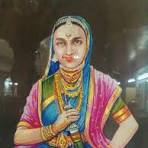
- Granddaughter of Shivaji Maharaj and Saibai
- Daughter of Sambhaji Maharaj, the Yuvraj of Swarajya
- Niece to Rajaram Maharaj, and sister to Shahu Maharaj
From her earliest days, Bhavanibai was surrounded by the ethos of Swarajya—valor, sacrifice, and dharma. Her upbringing was shaped by Yesubai’s wisdom and Sambhaji Maharaj’s fierce pride.
🧠 Chapter 3: Emotional Significance for Sambhaji Maharaj
For Sambhaji Maharaj, Bhavanibai’s birth was deeply personal:
- It reaffirmed his bond with Yesubai, who had stood by him during exile
- It gave him emotional grounding amidst political turbulence
- It inspired him to write verses on dharma, family, and feminine strength
Though he was often away on campaigns, Sambhaji Maharaj ensured that Bhavanibai was raised with education, ethics, and royal dignity.
🕊️ Chapter 4: Trials of Captivity and Courage
After the execution of Sambhaji Maharaj in 1689, Bhavanibai, along with Yesubai and young Shahu, was taken captive by Aurangzeb. She spent her formative years in Mughal custody, witnessing:
- The loss of her father
- The resilience of her mother
- The political games of the imperial court
Yet, Bhavanibai never broke. She emerged from captivity with grace, strength, and unwavering pride in her heritage.
💍 Chapter 5: Marriage into the Mahadik Clan
Later, Bhavanibai was married to Shankaraji Rajemahadik, son of the valiant Harji Rajemahadik. This alliance:
- Strengthened ties between Maratha noble houses
- Ensured Bhavanibai’s continued role in statecraft and diplomacy
- Positioned her as a symbol of Maratha unity and feminine leadership
Her husband played a key role in the defense of Jinji Fort, and Bhavanibai supported him with strategic insight and cultural diplomacy.
🌟 Final Reflection: Bhavanibai – Daughter of Fire and Fortitude
Though history often overlooks her, Bhavanibai was a true daughter of Swarajya. Born in a time of transition, raised in captivity, and married into valor, she embodied the resilience, grace, and strength of the Maratha spirit.
Her life reminds us that legacy is not just carried by swords—but by stories, sacrifices, and silent strength. And in every chapter of Sambhaji Maharaj’s journey, Bhavanibai’s presence was a quiet but powerful echo of his enduring legacy.
🔥 “Sambhaji Maharaj’s Bold Diplomatic Move: The 1678 Meeting with Diler Khan – Defiance, Strategy, and the Rise of a Rebel Prince”
🏰 Chapter 1: The Political Climate of Late 1678
By late 1678, the Maratha Empire was navigating a complex web of diplomacy and warfare. Shivaji Maharaj had consolidated power across Maharashtra, but tensions with the Mughal Empire remained high. Aurangzeb’s generals—including Diler Khan—were active in the Deccan, pressuring regional powers and probing Maratha defenses.
At the same time, Sambhaji Maharaj, then aged 21, was grappling with internal conflict. He had recently returned from temporary exile, following disagreements with Shivaji over succession planning and diplomatic strategy. Sambhaji favored a more aggressive stance against the Mughals, while Shivaji leaned toward cautious treaties.
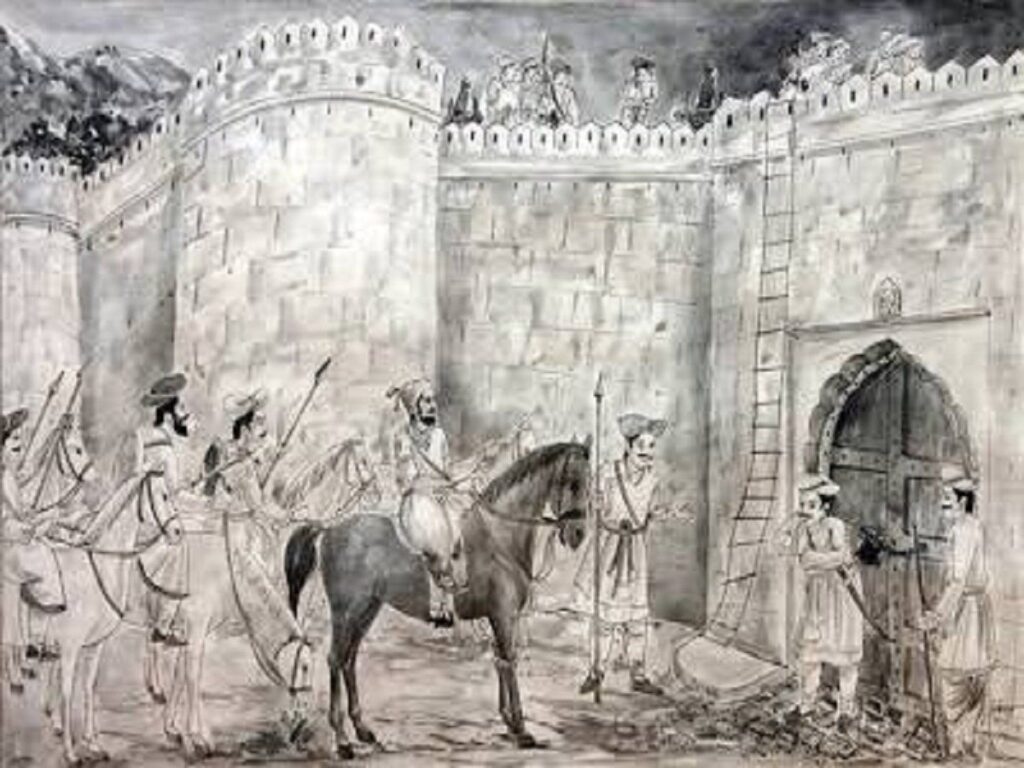
⚔️ Chapter 2: Why Did Sambhaji Maharaj Meet Diler Khan?
The meeting on 13 December 1678 was initiated by Sambhaji Maharaj himself, not Shivaji Maharaj. It was a clandestine diplomatic move, possibly intended to:
- Gauge Mughal intentions in the Deccan
- Explore potential alliances or ceasefires
- Assert his own political agency, separate from his father’s shadow
According to historical accounts, Sambhaji was frustrated by his limited role in court and sought to prove his strategic worth. Meeting Diler Khan was a way to step into the arena of high-stakes diplomacy, even if it meant defying protocol.
🧠 Chapter 3: Emotional Undercurrents
This wasn’t just politics—it was personal. For Sambhaji Maharaj, the meeting reflected:
- A desire to be seen as more than Shivaji’s son
- A need to reclaim his voice after exile
- A moment of emotional rebellion, wrapped in diplomatic formality
He was navigating identity, ambition, and legacy—all while under the watchful eyes of both Maratha and Mughal spies.
📜 Chapter 4: What Happened During the Meeting?
While exact details are scarce, records suggest that:
- Diler Khan welcomed Sambhaji with respect, recognizing his lineage and military reputation
- Discussions likely revolved around territorial boundaries, fort control, and future campaigns
- Sambhaji did not commit to any alliance, but left the door open for future dialogue
This meeting was not treasonous, but it was politically provocative. It sent shockwaves through Shivaji’s court, where ministers debated its implications.
🏯 Chapter 5: Shivaji Maharaj’s Reaction
When Shivaji Maharaj learned of the meeting, he was deeply disturbed. Though he admired Sambhaji’s intellect, he feared:
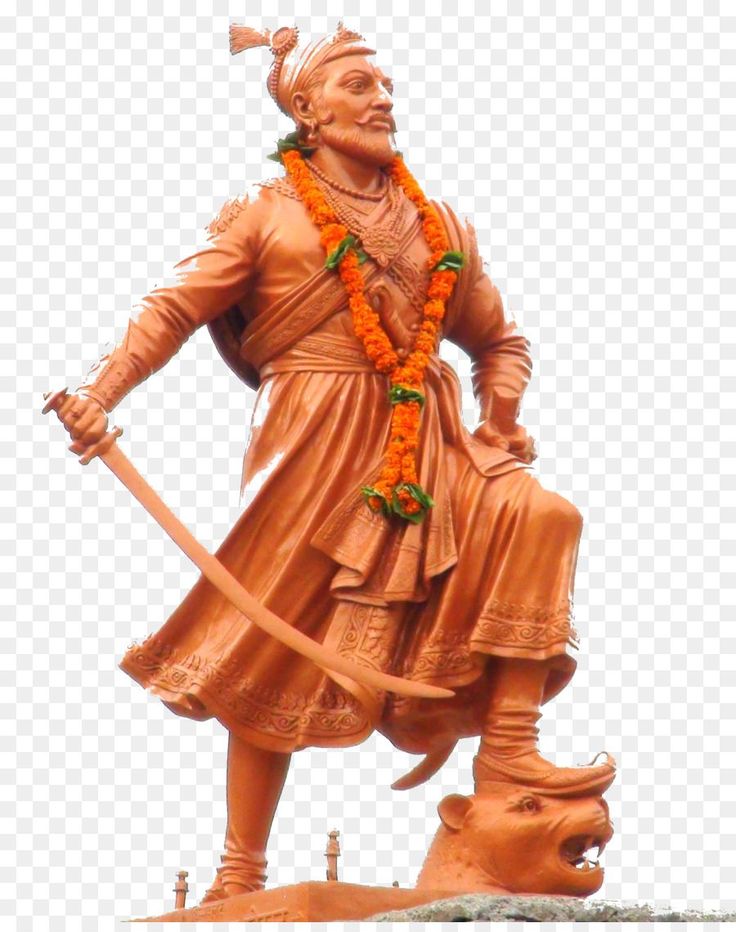
- Unintended consequences of rogue diplomacy
- Mughal manipulation of Sambhaji’s ambition
- Internal divisions within the Maratha leadership
Rather than punish Sambhaji, Shivaji chose strategic silence—a move that reflected both fatherly restraint and political calculation.
🌟 Chapter 6: Long-Term Impact on Sambhaji Maharaj’s Legacy
This meeting foreshadowed Sambhaji’s future reign:
- He would later refuse to bow to Mughal pressure, even under torture
- He would prioritize direct negotiation and bold action over cautious diplomacy
- He would become a symbol of defiance, shaped by early experiences like this one
The encounter with Diler Khan was not a betrayal—it was a rehearsal for leadership.
🕊️ Final Reflection: A Prince in Transition
The 13 December 1678 meeting between Sambhaji Maharaj and Diler Khan was a moment of transformation. It revealed a young leader:
- Hungry for recognition
- Willing to challenge norms
- Determined to carve his own path
It reminds us that greatness often begins in moments of tension, and that Sambhaji Maharaj’s legacy was forged not just in war—but in the quiet, controversial corridors of diplomacy.
⚔️ The Death of Shivaji Maharaj and the Succession Crisis of 1680
🕯️ Chapter 1: The Passing of a Titan
On 3 April 1680, Shivaji Maharaj, founder of the Maratha Empire, died after a brief illness—likely due to fever and dysentery. His death sent shockwaves through the empire. For decades, Shivaji had been the architect of Swarajya, and now the question loomed: Who would carry the torch forward?
Sambhaji Maharaj, his eldest son, was the natural successor. He had been declared Yuvraj (Crown Prince) in 1674 and had proven himself in administration, warfare, and diplomacy. But the path to the throne was not smooth.
🕵️ Chapter 2: The Court Conspiracy
In the days following Shivaji’s death, a faction within the royal court—led by Annaji Datto (chief secretary) and Soyarabai (Shivaji’s second wife and Rajaram’s mother)—moved swiftly to install Rajaram, then just 10 years old, as Chhatrapati.
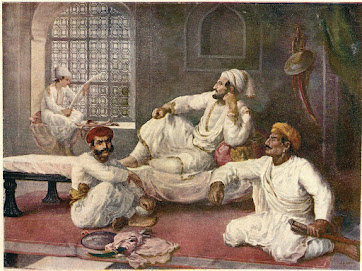
Their motivations were layered:
- Personal influence: They believed they could control Rajaram more easily than the independent-minded Sambhaji
- Old grievances: Sambhaji’s earlier disagreements with Shivaji and his temporary exile had weakened his standing
- Fear of reform: Sambhaji’s assertive style threatened the entrenched power of senior ministers
This faction kept Shivaji’s death a secret for several days, during which they performed a hasty coronation of Rajaram at Raigad.
🧠 Chapter 3: Sambhaji Maharaj’s Response
At the time of his father’s death, Sambhaji Maharaj was not in Raigad. Some accounts suggest he was in Panhala or Sangameshwar. Upon learning of the conspiracy, he acted decisively:
- He gathered loyal troops, including support from Hambirrao Mohite, the commander-in-chief and Soyarabai’s own brother
- He marched toward Raigad, asserting his claim as the rightful heir
- He arrested the conspirators, including Annaji Datto and other ministers involved in the plot
Sambhaji’s actions were swift, strategic, and bloodless. He avoided civil war, but made it clear: Swarajya would not be inherited through manipulation—it would be earned through merit and legacy.
👑 Chapter 4: The Real Coronation
Though Rajaram had been briefly crowned, the people and the military recognized Sambhaji Maharaj as the true successor. On 20 July 1680, he was formally crowned as Chhatrapati at Panhala, and later reaffirmed at Raigad Fort on 16 January 1681.
His coronation was not just a ritual—it was a restoration of rightful leadership.
🌟 Final Reflection: A Throne Earned, Not Given
The events of April 1680 revealed the depth of court politics, but also the strength of Sambhaji Maharaj’s character. He faced betrayal, manipulation, and doubt—but responded with clarity, courage, and conviction.
This moment reminds us that true leadership is not inherited—it is proven in crisis. Sambhaji Maharaj’s rise was not just a succession—it was a statement: Swarajya would remain fearless, even without Shivaji.
🔥 “The Rebel’s Throne: Sambhaji Maharaj’s Symbolic Coronation at Panhala – Defying Conspiracy, Declaring Legacy”
👑 Chapter 1: The Aftershock of Shivaji Maharaj’s Death
When Shivaji Maharaj passed away on 3 April 1680, the Maratha Empire was left without its founding father. The loss was not just political—it was deeply emotional. For Sambhaji Maharaj, it was the death of a father, mentor, and the architect of Swarajya.
But grief quickly gave way to court conspiracies. A faction led by Annaji Datto and Soyarabai (Shivaji’s second wife and mother of Rajaram) moved swiftly to install the 10-year-old Rajaram as Chhatrapati, bypassing Sambhaji Maharaj, the declared Yuvraj since 1674.
🕵️ Chapter 2: The Conspiracy to Sideline Sambhaji Maharaj
Keyword Focus: Annaji Datto, Soyarabai, Rajaram, succession politics
The conspirators feared Sambhaji Maharaj’s assertiveness, intellect, and independence. They believed:
- Rajaram could be controlled, allowing them to retain power
- Sambhaji’s past disagreements with Shivaji and his brief exile could be used to question his loyalty
- His bold diplomatic moves, like the meeting with Diler Khan, made him unpredictable
They kept Shivaji’s death a secret for several days and performed a hasty coronation of Rajaram at Raigad. Sambhaji Maharaj was not informed, nor invited.
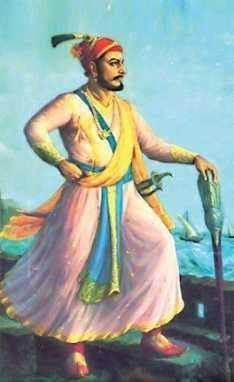
⚔️ Chapter 3: Sambhaji Maharaj’s Strategic Response
Keyword Focus: Panhala Fort, symbolic coronation, Hambirrao Mohite
At the time, Sambhaji Maharaj was at Panhala Fort, a stronghold in southern Maharashtra. When he learned of the conspiracy, he acted with calm fury:
- He gathered loyal troops, including support from Hambirrao Mohite, Soyarabai’s own brother and the commander-in-chief
- He refused to march on Raigad immediately, choosing instead to assert his legitimacy from Panhala
On 20 July 1680, Sambhaji Maharaj held a symbolic coronation at Panhala Fort. This was not a full Rajyabhishek like Shivaji’s, but a public declaration of his claim to the throne.
🧠 Chapter 4: Why Panhala?
Panhala was not chosen by accident. It was:
- Strategically located in southern Maharashtra, allowing Sambhaji to control key routes
- A fort with historical significance, once held by Shivaji himself
- A safe distance from Raigad, giving Sambhaji time to consolidate support without immediate confrontation
The symbolic coronation at Panhala was a message to the empire: “I am the rightful heir. Swarajya is not for sale.”
🛡️ Chapter 5: Supporters and Opponents
Supporters:
- Hambirrao Mohite: Despite being Soyarabai’s brother, he chose loyalty to Swarajya over family politics
- Netaji Palkar: Veteran commander and early mentor to Sambhaji
- Moropant Pingle: Peshwa who eventually recognized Sambhaji’s claim
- Grassroots soldiers and regional sardars who had fought under Sambhaji’s command
Opponents:
- Annaji Datto: Chief secretary and mastermind of the Rajaram coronation
- Soyarabai: Political matriarch seeking power through her son
- A section of court Brahmins who questioned Sambhaji’s past actions and temperament
🕊️ Chapter 6: Emotional Undercurrents
For Sambhaji Maharaj, the symbolic coronation was not just political—it was deeply emotional:
- He had been groomed for leadership since childhood
- He had endured exile, suspicion, and betrayal
- He had watched his father’s legacy being manipulated by courtiers
Standing atop Panhala, with the saffron flag fluttering and loyal soldiers by his side, Sambhaji Maharaj reclaimed his identity.
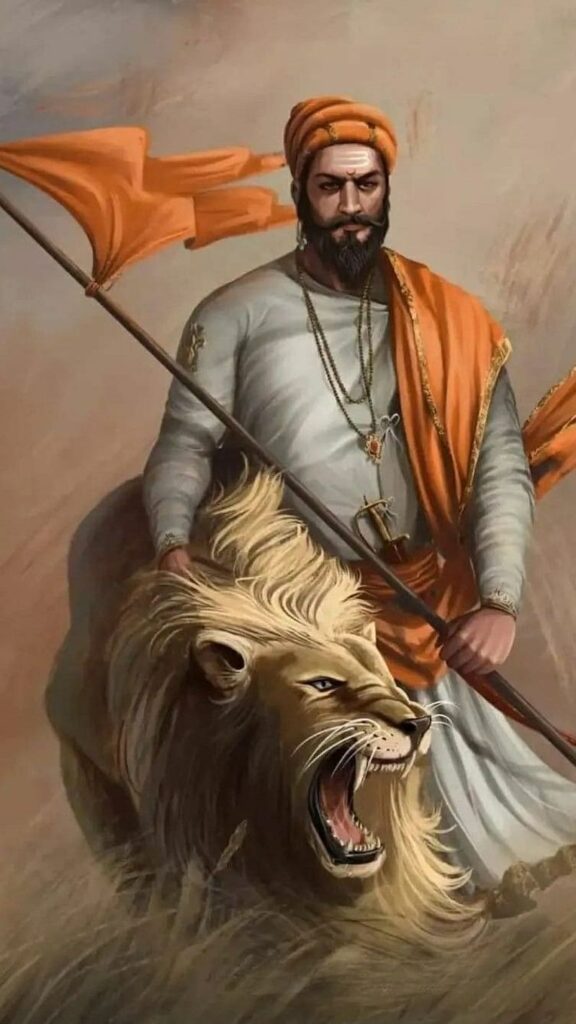
📜 Chapter 7: Aftermath and the Road to Raigad
Following the Panhala declaration:
- Sambhaji marched toward Raigad, confronting the conspirators
- He arrested Annaji Datto and other plotters, but spared Rajaram and Soyarabai
- On 16 January 1681, he held his official Rajyabhishek at Raigad Fort, completing the journey that began at Panhala
🌟 Final Reflection: A Throne Forged in Fire
The symbolic coronation at Panhala Fort was a defining moment in Sambhaji Maharaj’s legacy. It was:
- A rejection of manipulation
- A reaffirmation of Swarajya’s ideals
- A testament to his emotional strength and political wisdom
In that moment, Sambhaji Maharaj was not just claiming a throne—he was defending a dream.
👑 “The Rise of Chhatrapati Sambhaji Maharaj: Raigad’s Throne, Swarajya’s Shield, and a Legacy Forged in Fire”
👑 Chapter 1: The Road to Raigad – From Rebellion to Recognition
Following the death of Shivaji Maharaj on 3 April 1680, Sambhaji Maharaj faced a storm of court conspiracies. A faction led by Soyarabai and Annaji Datto attempted to install the young Rajaram as Chhatrapati, sidelining Sambhaji despite his prior coronation as Yuvraj in 1674.
In response, Sambhaji Maharaj held a symbolic coronation at Panhala Fort on 20 July 1680, asserting his claim. But the true seat of power was Raigad Fort, and Sambhaji knew that only a formal Rajyabhishek there would silence opposition and unify Swarajya.
🏰 Chapter 2: Preparing Raigad for the Rajyabhishek
The preparations for the official coronation on 16 January 1681 were meticulous and emotionally charged. Sambhaji Maharaj wanted the ceremony to reflect:
- Continuity with Shivaji Maharaj’s legacy
- Spiritual purity and Vedic tradition
- Political strength and unity
Raigad Fort was adorned with:
- Flags bearing the Bhonsale insignia
- Sacred water from rivers across Bharatvarsha
- A golden throne placed in the royal court
- Vedic scholars from Nashik, Varanasi, and Pune
The rituals mirrored Shivaji’s 1674 coronation, symbolizing dynastic continuity and dharmic legitimacy.
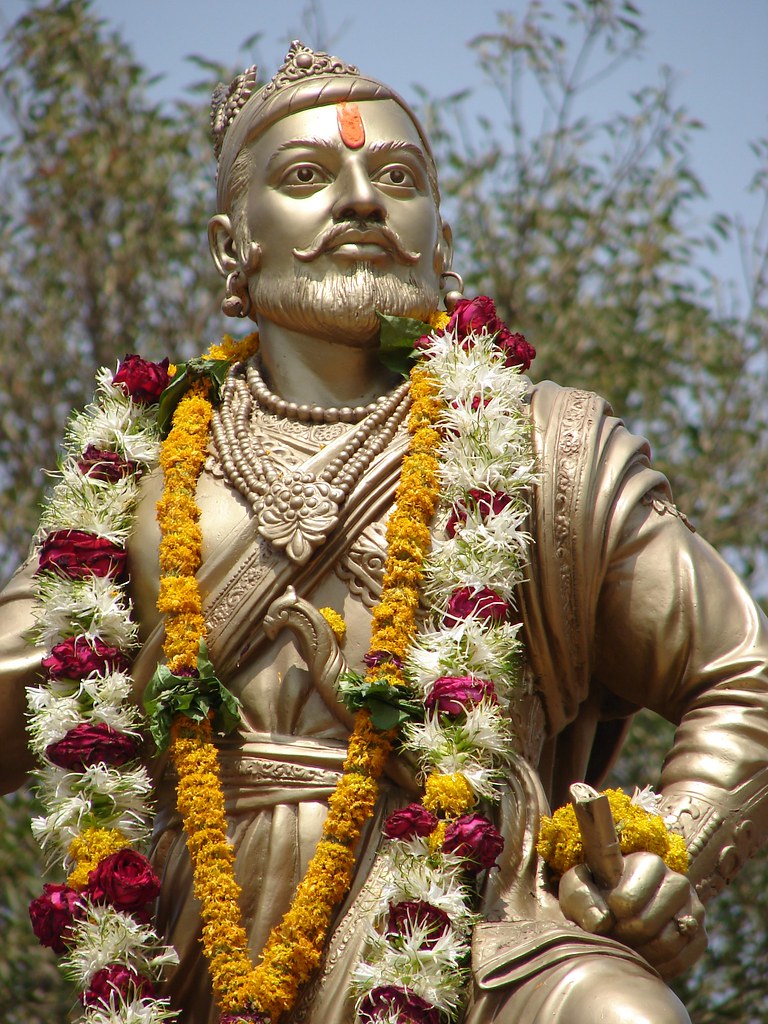
🧠 Chapter 3: Emotional Undercurrents of the Coronation
Keyword Focus: Sambhaji Maharaj, legacy, emotional resilience
For Sambhaji Maharaj, this coronation was deeply personal. It marked:
- Vindication after betrayal
- Reconciliation with his father’s vision
- A vow to protect Swarajya at all costs
He stood not just as a king—but as a son, a warrior, and a poet. His writings from this period reflect introspection, resolve, and spiritual depth.
👥 Chapter 4: Who Attended the Coronation?
The ceremony was attended by:
- Yesubai, Sambhaji’s wife and emotional anchor
- Hambirrao Mohite, commander-in-chief and loyal supporter
- Moropant Pingle, Peshwa and strategist
- Rajaram, who was spared and honored as a prince
- Regional sardars, poets, and Brahmins
This gathering was not just ceremonial—it was a political consolidation, reaffirming Sambhaji’s authority across the empire.
📜 Chapter 5: Governance Style and Administrative Reforms
Keyword Focus: Sambhaji Maharaj, administration, reform, military strategy
Once crowned, Chhatrapati Sambhaji Maharaj began ruling with a blend of discipline, intellect, and aggression. His governance included:
- Strengthening fort networks across Maharashtra
- Expanding the Maratha navy, especially in Konkan
- Codifying military protocols and training regiments
- Encouraging literature and scholarship, including Persian and Sanskrit texts
- Maintaining Chauth and Sardeshmukhi systems for revenue
He appointed trusted ministers like:
- Ramchandra Pant Amatya – finance and diplomacy
- Moreshwar Pingale – internal affairs
- Kavi Kalash – cultural advisor and close confidant
⚔️ Chapter 6: Military Campaigns and Resistance
Keyword Focus: Sambhaji Maharaj, Mughal Empire, Aurangzeb, warfare
Sambhaji’s reign (1681–1689) was marked by relentless warfare. He faced:
- Aurangzeb’s full-scale invasion of the Deccan
- Portuguese aggression in Goa
- Siddi resistance from Janjira
- Southern campaigns against Mysore
Despite limited resources, Sambhaji Maharaj used:
- Guerrilla tactics in hilly terrain
- Naval raids along the western coast
- Psychological warfare, including misinformation and symbolic gestures
His ability to adapt and improvise made him a nightmare for imperial forces.
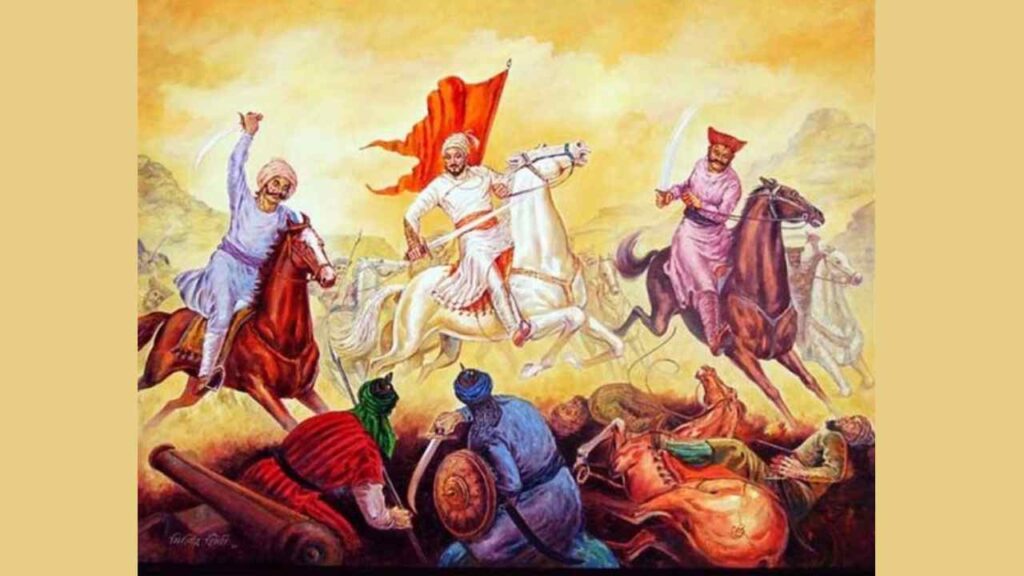
🕊️ Chapter 7: Cultural Patronage and Intellectual Depth
Keyword Focus: Sambhaji Maharaj, literature, Nrupalini, Raja Vivek
Beyond warfare, Sambhaji Maharaj was a scholar and poet. He authored:
- Nrupalini – a Sanskrit epic
- Raja Vivek – a treatise on kingship and ethics
- Persian correspondence with regional rulers
He supported:
- Vedic scholars and temple restoration
- Multilingual education for royal children
- Cultural diplomacy with southern kingdoms
His reign proved that a sword and a script can coexist.
🌟 Final Reflection: A Coronation That Echoes Through Time
The official coronation of Sambhaji Maharaj on 16 January 1681 was not just a royal event—it was a spiritual and political rebirth. It marked:
- The restoration of rightful leadership
- The beginning of a reign defined by resistance and reform
- The emergence of a legacy that would inspire generations
Even today, Raigad Fort stands as a silent witness to that moment—a place where a son became a sovereign, and a prince became a protector of Swarajya.
👑 “The Rise of Chhatrapati Sambhaji Maharaj: Raigad’s Throne, Swarajya’s Shield, and a Legacy Forged in Fire”
📘 “The Lion vs. the Empire: Sambhaji Maharaj’s Relentless Resistance Against Aurangzeb”
🏰 Chapter 1: Aurangzeb’s Deccan Strategy and Personal Entry
In 1681, the Mughal emperor Aurangzeb made a decision that would define the final decades of his rule—he personally descended into the Deccan to crush the Maratha Empire. This was not a delegation of power; it was a direct imperial campaign. Aurangzeb’s goal was clear: destroy Swarajya, erase the legacy of Shivaji Maharaj, and subjugate Sambhaji Maharaj, the newly crowned Chhatrapati.
Aurangzeb’s Deccan strategy was massive:
- He mobilized over 500,000 troops, the largest Mughal force ever deployed in the south
- He targeted key forts like Raigad, Panhala, Bhupalgarh, and Janjira
- He formed alliances with the Portuguese, Siddis, and Mysore rulers to encircle the Marathas
But what Aurangzeb didn’t anticipate was the emotional fire and tactical brilliance of Sambhaji Maharaj, who had inherited not just a throne—but a mission.
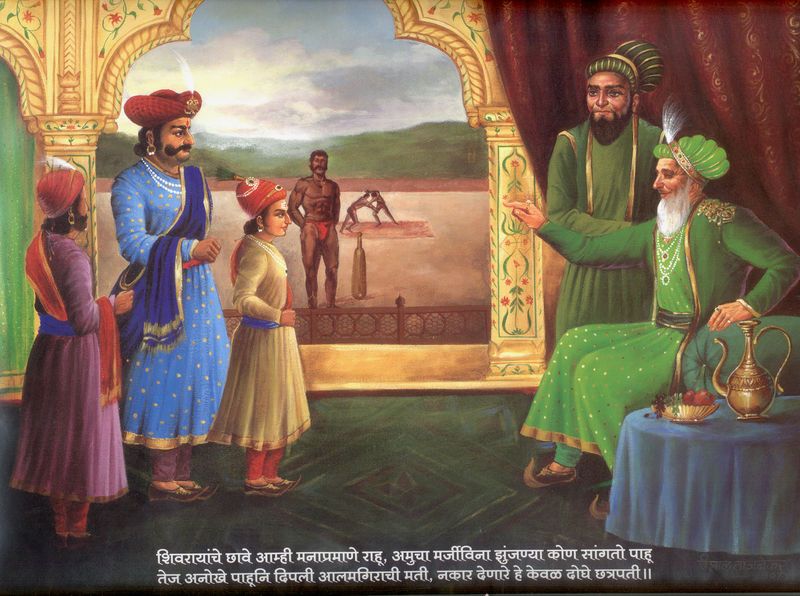
⚔️ Chapter 2: Sambhaji’s Guerrilla Warfare and Fort Defense
Sambhaji Maharaj responded with the weapon his father had perfected—guerrilla warfare. He understood that Swarajya could not survive conventional battles against the Mughal war machine. So he turned the hills, forests, and forts of Maharashtra into a living battlefield.
His tactics included:
- Ambushes in mountain passes, where Mughal convoys were vulnerable
- Rapid cavalry raids, striking supply lines and retreating before retaliation
- Fort-based resistance, turning strongholds into symbols of defiance
Forts like Raigad, Pratapgad, Vishalgad, and Bhupalgarh became more than military assets—they became emblems of Maratha pride. Sambhaji’s forces, though smaller, were faster, smarter, and emotionally driven.
🏹 Chapter 3: Key Battles – Bhupalgarh and Sangameshwar
🛡️ Battle of Bhupalgarh (1687)
Aurangzeb’s forces attacked Bhupalgarh, a strategic fort in Satara district. Sambhaji Maharaj refused to surrender. The battle was fierce, and though the fort was eventually destroyed, the resistance delayed Mughal advances and exposed their vulnerability.
Bhupalgarh became a symbol of sacrifice and strategic delay—a fort that fell, but a spirit that rose.
🕯️ Battle of Sangameshwar (1689)
This was Sambhaji Maharaj’s final stand. While planning a southern campaign, he was betrayed by Ganoji Shirke, a relative from his wife’s side. Captured near Sangameshwar, Sambhaji fought valiantly despite being outnumbered.
His capture was not a defeat—it was the beginning of his martyrdom. His refusal to convert, even under torture, became a rallying cry for Swarajya.
🧠 Chapter 4: Role of Hambirrao Mohite and Kavi Kalash
Sambhaji Maharaj’s leadership was strengthened by two pillars:
⚔️ Hambirrao Mohite – The Sword of Swarajya
As commander-in-chief, Hambirrao:
- Led key battles against Mughal generals
- Trained Maratha forces in guerrilla tactics
- Maintained morale during sieges and retreats
His loyalty was legendary—even though he was Soyarabai’s brother, he chose Swarajya over family politics.
📜 Kavi Kalash – The Soul of the Court
Kavi Kalash was more than a poet. He was:
- A strategist, helping plan campaigns
- A diplomat, managing internal factions
- An emotional anchor, inspiring Sambhaji with verses and counsel
Together, they formed a triangle of leadership—sword, strategy, and soul.
🕵️ Chapter 5: Psychological Warfare and Counter-Intelligence
Sambhaji Maharaj understood that war was not just physical—it was psychological. He used tactics to confuse and demoralize the Mughals:
- Spread false intelligence, misleading Aurangzeb’s generals
- Used symbolic gestures, like burning Mughal flags and releasing prisoners with stories of Maratha valor
- Employed counter-intelligence networks, gathering data from Mughal camps
These tactics created paranoia and fear in the Mughal ranks. Sambhaji’s ability to get inside the enemy’s mind made him a nightmare for imperial forces.
💰 Chapter 6: Impact on Mughal Treasury and Morale
Aurangzeb’s Deccan campaign became a financial disaster:
- Over 20 years of warfare drained the Mughal treasury
- Constant defeats and stalemates demoralized troops
- The empire’s focus on the south weakened its grip in the north
Sambhaji Maharaj’s resistance forced the Mughal Empire into decline, proving that a smaller force with purpose can defeat a larger force with ego.
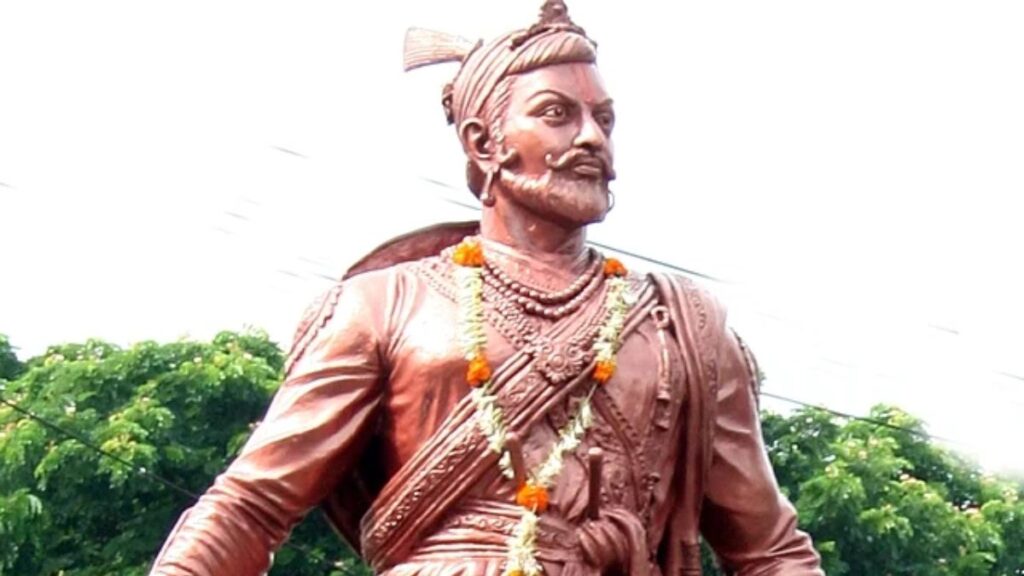
🕯️ Chapter 7: Emotional Toll and Legacy of Defiance
Sambhaji Maharaj’s reign was emotionally intense:
- He faced betrayal from within, including family ties
- He endured constant warfare, rarely knowing peace
- He was tortured and executed, but never bowed
His final words, refusing conversion and defying Aurangzeb, became a symbol of Hindu resistance and Maratha pride. His legacy inspired Rajaram Maharaj, Shahu Maharaj, and the Peshwa era.
Even today, his name evokes courage, conviction, and sacrifice.
🌟 Final Reflection: The Lion Who Roared Till His Last Breath
Sambhaji Maharaj didn’t just fight wars—he fought for identity, dignity, and Swarajya. His resistance against Aurangzeb was not just military—it was spiritual and emotional.
He proved that a true Chhatrapati doesn’t rule from a throne—but from the hearts of his people.
His reign reminds us:
“Empires may have armies, but Swarajya has sons.”
📘 Section 2: War Against the Portuguese (1683–1684)
🔥 “Sambhaji Maharaj’s Coastal Storm: Breaking the Portuguese Grip on Konkan”
🌊 Chapter 1: The Portuguese Threat to Swarajya
By the early 1680s, the Portuguese Empire had entrenched itself along the western coast of India, particularly in Goa, Daman, and Diu. Their presence wasn’t just territorial—it was ideological. The Goan Inquisition, a brutal religious campaign, targeted Hindus and local rulers, threatening the cultural fabric of the Konkan region.
Sambhaji Maharaj, deeply aware of this threat, saw the Portuguese not just as colonizers—but as cultural aggressors. Their alliance with Aurangzeb during the Mughal-Maratha war made them a direct enemy of Swarajya.
⚓ Chapter 2: Naval Build-Up and Strategic Alliances
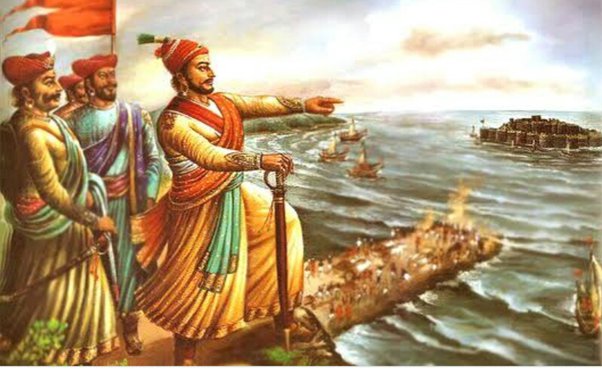
Sambhaji Maharaj knew that to challenge the Portuguese, he needed a strong navy. He began:
- Constructing warships along the Konkan coast
- Fortifying coastal outposts like Malvan, Sindhudurg, and Padmadurg
- Recruiting naval commanders like Yesaji Kank and Krishnaji Kank
He also formed alliances with Sawantwadi, a local kingdom that had grievances against Portuguese interference. This coalition gave Sambhaji regional intelligence, manpower, and strategic depth.
🛡️ Chapter 3: Invasion of Goa and Portuguese Territories
In late 1683, Sambhaji Maharaj launched a full-scale invasion of Goa. His forces:
- Raided Portuguese settlements, burning outposts and disrupting trade
- Targeted churches and forts, symbolizing colonial dominance
- Engaged in naval skirmishes, pushing Portuguese fleets into retreat
The Portuguese, caught off guard, requested help from the British East India Company, who refused to intervene. Sambhaji’s campaign sent a clear message: Swarajya would not tolerate foreign rule on Indian soil.
⚔️ Chapter 4: Battles Led by Yesaji Kank and Krishnaji Kank
These two commanders became legends during the campaign:
- Yesaji Kank led the Malvan offensive, capturing key Portuguese outposts
- Krishnaji Kank coordinated naval raids, sinking Portuguese supply ships
- Both used guerrilla tactics at sea, a rare and innovative strategy
Their success proved that Maratha naval power was no longer secondary—it was revolutionary.
🤝 Chapter 5: Role of British East India Company and Sawantwadi
The British East India Company, though neutral, observed the conflict closely. They feared Sambhaji’s rise and refused Portuguese requests for military aid, choosing instead to strengthen their own coastal defenses.
Sawantwadi, under Sambhaji’s protection, became a buffer zone between Maratha and Portuguese territories. This alliance helped stabilize the Konkan region and expand Swarajya’s influence.
💥 Chapter 6: Aftermath and Strategic Coastal Control
Though Sambhaji Maharaj didn’t fully annex Goa, his campaign:
- Weakened Portuguese morale and trade
- Forced them into defensive diplomacy
- Established Maratha dominance along the Konkan coast
The Portuguese began paying tribute and avoiding direct conflict, recognizing the Maratha navy as a rising force.
🧠 Chapter 7: Cultural Impact and Maritime Legacy
Sambhaji’s war against the Portuguese wasn’t just military—it was cultural and ideological. He:
- Protected Konkan temples and local traditions
- Encouraged Maratha shipbuilding and coastal trade
- Inspired future naval leaders like Kanhoji Angre
His campaign laid the foundation for Maratha maritime supremacy, which would later challenge European powers across the Indian Ocean.
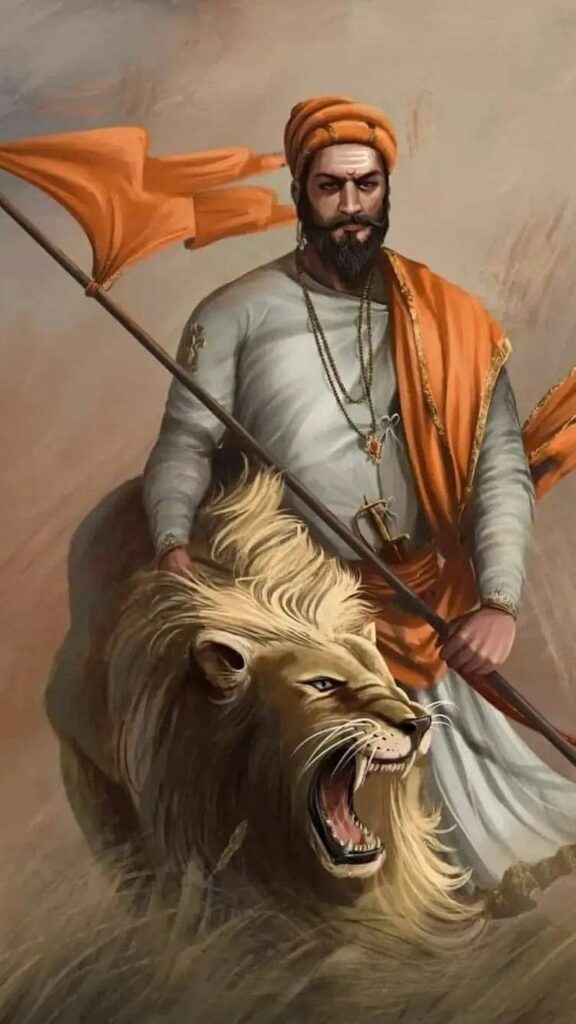
🌟 Final Reflection: The Coastal Storm That Shook an Empire
Sambhaji Maharaj’s war against the Portuguese was a masterclass in naval strategy, cultural defense, and emotional leadership. He proved that Swarajya was not just a landlocked dream—it was a coastal roar.
His campaign reminds us:
“The sea does not belong to empires—it belongs to those who dare to sail against them.”
📘 Section 3: Siege of Janjira (1682–1683)
🔥“The Unyielding Fortress: Sambhaji Maharaj’s Campaign Against the Siddis of Janjira”
🏯 Chapter 1: Janjira – The Thorn in Swarajya’s Coast
The Janjira Fort, perched on an island off the Konkan coast, was a symbol of foreign dominance and Mughal loyalty. Controlled by the Siddis, African-origin rulers backed by Aurangzeb, Janjira was a naval stronghold that threatened Maratha trade, security, and pride.
For Sambhaji Maharaj, Janjira wasn’t just a fort—it was a challenge to Swarajya’s sovereignty. Its walls echoed with Mughal arrogance, and its cannons pointed at Maratha aspirations.
⚔️ Chapter 2: Sambhaji Maharaj’s Strategic Vision
In 1682, Sambhaji Maharaj launched a campaign to capture Janjira. He knew that brute force wouldn’t work—the fort was surrounded by water, heavily armed, and reinforced by Portuguese and Mughal allies.
So he devised a multi-layered strategy:
- Construct a rival fort, Padmadurg, to encircle Janjira
- Deploy guerrilla naval units to disrupt Siddi supply lines
- Use psychological warfare to weaken morale inside Janjira
This wasn’t just a siege—it was a symbolic war for coastal freedom.
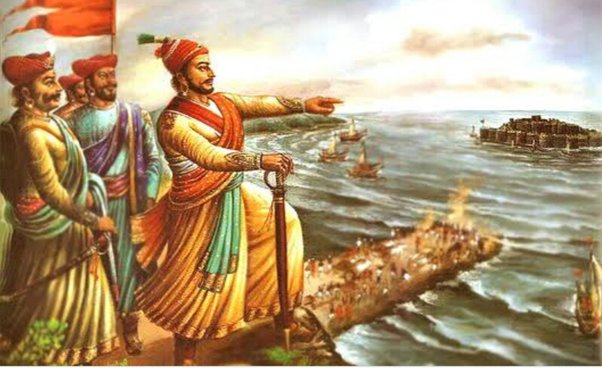
🧠 Chapter 3: The Role of Bahirji Naik – The Shadow of Swarajya
Bahirji Naik, the legendary spy and intelligence chief of the Maratha Empire, played a crucial role in the Janjira campaign. Though older by this time, his legacy and network remained active.
His contributions included:
- Mapping Janjira’s defenses, identifying weak points in the fort’s structure
- Intercepting Siddi communications, revealing their alliance plans with Aurangzeb
- Training coastal scouts, who infiltrated enemy camps disguised as traders and fishermen
Bahirji Naik’s intelligence allowed Sambhaji Maharaj to plan with precision, turning the sea into a battlefield of shadows.
🛡️ Chapter 4: Padmadurg – The Fort That Roared Back
To counter Janjira’s dominance, Sambhaji built Padmadurg, a naval fort directly facing Janjira. It was:
- Engineered with cannon placements aimed at Janjira’s walls
- Staffed with elite Maratha naval forces trained in amphibious warfare
- Symbolically named to reflect Maratha pride and defiance
Padmadurg became a launchpad for raids, a beacon of resistance, and a message to the world: Swarajya would not be silenced.
🕵️ Chapter 5: Kondaji Farzand – The Braveheart of Janjira
Sambhaji Maharaj sent Kondaji Farzand, a fearless warrior, to infiltrate Janjira. Disguised as a deserter, Kondaji gained the trust of the Siddis and began:
- Sabotaging internal defenses
- Gathering intelligence for a coordinated attack
- Planning an uprising from within
But his cover was blown. He was captured and executed, refusing to betray Swarajya. His sacrifice became a legend of loyalty, etched into Maratha memory.
💥 Chapter 6: Outcome and Strategic Impact
Despite relentless efforts, Janjira was not captured. The Siddis held their ground, backed by Mughal reinforcements. But Sambhaji’s campaign achieved:
- Containment of Siddi expansion
- Disruption of Mughal-coastal coordination
- Establishment of Maratha naval dominance through Padmadurg
The siege proved that even an unconquered fort can be silenced by strategy, sacrifice, and spirit.
🌊 Chapter 7: Legacy of the Janjira Campaign
Sambhaji Maharaj’s campaign against Janjira was more than a military operation—it was a cultural and emotional declaration. It showed:
- That Swarajya would challenge every symbol of foreign rule
- That intelligence and infiltration were as powerful as cannons
- That heroes like Bahirji Naik and Kondaji Farzand were the soul of resistance
Even today, Janjira stands—but its silence speaks of Maratha defiance.
🌟 Final Reflection: The Fortress That Faced a Flame
Sambhaji Maharaj didn’t just fight Janjira—he fought the idea that Swarajya could be caged. With Bahirji Naik’s shadow, Kondaji’s sacrifice, and Padmadurg’s roar, he turned a siege into a saga.
His campaign reminds us:
“Some walls may not fall—but they will remember who dared to shake them.”
📘 Section 4: Mysore Campaign (1685–1687)
🔥“Southern Thunder: Sambhaji Maharaj’s Campaign Against Mysore – Diplomacy, Warfare, and the Shadow of Bahirji Naik”
🐘 Chapter 1: The Southern Legacy of Swarajya
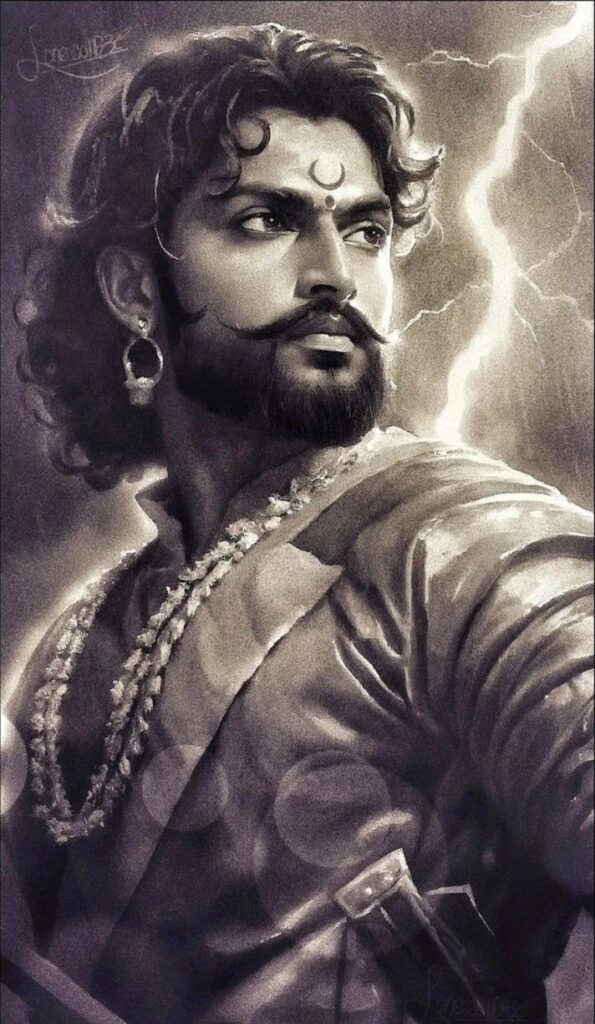
The Maratha connection to the south wasn’t new. Shahaji Raje, Sambhaji’s grandfather, had ruled parts of Karnataka. Shivaji Maharaj had launched campaigns in Tanjore, Gingee, and Mysore, laying the foundation for Maratha influence in the region.
By 1685, the southern kingdoms—especially Mysore under Chikka Devaraja—had grown hostile. Mysore had allied with the Mughals and posed a threat to Maratha expansion. For Sambhaji Maharaj, this wasn’t just a territorial issue—it was about restoring the southern flame of Swarajya.
⚔️ Chapter 2: The March to Mysore Begins
Sambhaji Maharaj mobilized a powerful force led by:
- Harji Raje Mahadik, a seasoned general
- Kumaraiya, a southern strategist
- A network of local allies and informants
The campaign aimed to:
- Disrupt Mysore’s alliance with Aurangzeb
- Secure Maratha borders in Karnataka
- Reclaim forts and trade routes lost to Mysore aggression
The march was swift, strategic, and emotionally charged. Sambhaji was not just expanding—he was reclaiming ancestral ground.
🧠 Chapter 3: The Role of Bahirji Naik – The Invisible Architect
Though aging, Bahirji Naik’s legacy and intelligence network remained active during the Mysore campaign. His contributions were subtle but critical:
- Mapped Mysore’s terrain, identifying vulnerable passes and fort routes
- Intercepted Mysore-Mughal communications, revealing plans for joint offensives
- Deployed spies disguised as traders, gathering intel from Srirangapatna and Bangalore
- Advised Harji Raje Mahadik on infiltration tactics and psychological warfare
Bahirji Naik’s shadow loomed over the campaign—not as a warrior, but as a silent architect of victory.
🏯 Chapter 4: Battles Around Srirangapatna and Bangalore
The Maratha forces clashed with Mysore armies near:
- Srirangapatna, the capital of Mysore
- Bangalore, a strategic trade and military hub
Sambhaji’s tactics included:
- Night raids, catching Mysore forces off guard
- Fort sieges, using cannons and psychological pressure
- Diplomatic outreach, offering peace in exchange for tribute
The battles were intense, but Sambhaji’s forces proved superior in mobility, morale, and intelligence.
💰 Chapter 5: The Treaty and Tribute
In 1687, Chikka Devaraja sued for peace. The treaty included:
- A tribute of 1 crore honas (gold coins) to the Maratha Empire
- Recognition of Sambhaji Maharaj’s supremacy in southern territories
- A temporary withdrawal of Mysore support to the Mughals
This was not just a diplomatic win—it was a symbolic restoration of Maratha pride in the south.
📜 Chapter 6: Cultural and Political Impact
Sambhaji Maharaj’s Mysore campaign had lasting effects:
- Expanded Swarajya’s influence into Karnataka
- Protected southern allies like Tanjore and Gingee
- Inspired future Maratha campaigns, including Rajaram’s defense from Gingee Fort
He also encouraged cultural exchange, promoting Marathi literature and administration in southern forts.
🌟 Final Reflection: The Thunder That Rolled South
Sambhaji Maharaj’s campaign against Mysore was a blend of military brilliance, emotional depth, and strategic foresight. With Bahirji Naik’s invisible hand guiding the way, he proved that Swarajya was not confined to Maharashtra—it was a pan-Indian vision.
His campaign reminds us:
“Some victories are won with swords—others with shadows. Bahirji Naik was the shadow behind Sambhaji’s southern thunder.”
📘 The Betrayal at Sangameshwar: How Chhatrapati Sambhaji Maharaj Was Captured and Who Stood With Him
🪔 Introduction: A Betrayal That Shook an Empire
On 1 February 1689, the unthinkable happened. Chhatrapati Sambhaji Maharaj, the lion-hearted ruler of the Maratha Empire, was captured by Mughal forces near Sangameshwar, not through battle, but through treachery. The betrayal came from within—from Ganoji Shirke, a man bound to Sambhaji by blood and marriage.
This was not just a military event. It was a spiritual wound, a moment that tested the soul of Swarajya. In this blog, we’ll explore the full context of this event: why Sambhaji was in Sangameshwar, who stood with him, how the betrayal unfolded, and what legacy it left behind.
🏞️ Chapter 1: Why Was Sambhaji Maharaj in Sangameshwar?
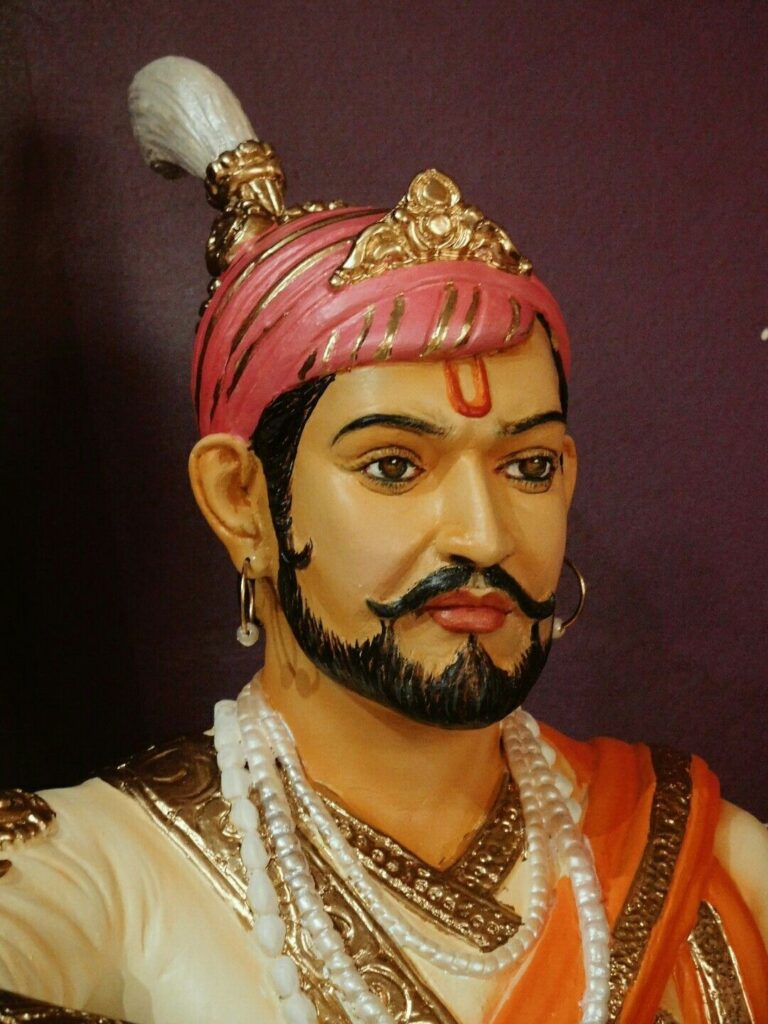
🔍 Strategic Intent, Not Complacency
Sambhaji Maharaj was not hiding. He was in Sangameshwar to plan a southern campaign. His goal was to:
- Reinforce Maratha influence in Karnataka
- Coordinate with southern allies
- Possibly establish a base at Gingee Fort, which would later become a stronghold for Rajaram Maharaj
Sangameshwar was chosen because of:
- Its proximity to the coast, allowing naval movement
- Its location within loyal Maratha territory
- Its relative seclusion, ideal for confidential war planning
🧠 The Presence of Kavi Kalash
With him was Kavi Kalash, his closest advisor, poet, and strategist. Kalash was more than a courtier—he was Sambhaji’s mirror, his voice, and his emotional anchor.
🧠 Chapter 2: The Shadow of Bahirji Naik
Though Bahirji Naik, the legendary spy of Swarajya, was aging, his intelligence network remained active. His scouts had:
- Monitored Mughal movements, especially those of Mukarrab Khan
- Intercepted suspicious communications
- Warned of possible infiltration
But even Bahirji’s shadows couldn’t pierce the darkness of betrayal that came from within the royal family.
🧨 Chapter 3: The Betrayal by Ganoji Shirke
🧬 Blood Ties, Broken Trust
Ganoji Shirke was Sambhaji’s brother-in-law, related through Yesubai, Sambhaji’s wife. Once a trusted family member, Ganoji turned traitor. His motivations remain debated:
- Personal resentment over political marginalization
- Greed, lured by Mughal promises
- Fear, manipulated by Aurangzeb’s agents
🗺️ The Mechanics of Betrayal
Ganoji provided:
- Detailed maps of Sangameshwar
- Timings of Sambhaji’s movements
- Safe passage for Mughal forces through Maratha territory
This betrayal allowed Mukarrab Khan to launch a surprise ambush.
⚔️ Chapter 4: Who Was With Sambhaji Maharaj?
Despite the ambush, Sambhaji was not alone. He was accompanied by around 150 loyal warriors, including:
- Kavi Kalash – his spiritual and strategic advisor
- Maloji Ghorpade – a fierce commander who died defending his king
- Raiba Malusare – a warrior whose name echoes with valor
- Local sardars and scouts, many of whom were killed in the attack
These men stood their ground, refusing to abandon their Chhatrapati.
🕯️ Chapter 5: The Ambush and Capture
On 1 February 1689, Mughal forces stormed Sangameshwar. The Marathas were caught off guard:
- Maloji Ghorpade and Raiba Malusare were killed
- Sambhaji Maharaj and Kavi Kalash were captured alive
- Mughal troops suffered losses but achieved their goal
Sambhaji was bound, humiliated, and taken to Aurangzeb’s camp. But even in chains, he refused to bow.
🧠 Chapter 6: The Psychological Warfare of Aurangzeb
Aurangzeb believed that capturing Sambhaji would break the Maratha spirit. He demanded:
- Conversion to Islam
- Disclosure of Maratha military secrets
- Public submission to Mughal authority
Sambhaji’s response was silence and poetry. Kavi Kalash composed verses mocking Aurangzeb’s tyranny. Sambhaji endured weeks of brutal torture, but never surrendered.
💥 Chapter 7: Execution and Martyrdom
On 11 March 1689, after enduring unspeakable torture, Sambhaji Maharaj and Kavi Kalash were executed. Their bodies were mutilated and thrown into the Bhima river near Tulapur.
But their deaths did not silence Swarajya. Instead, they ignited a fire that would burn for generations.
🧬 Chapter 8: The Aftermath – Swarajya Strikes Back
Sambhaji’s martyrdom triggered:
- Guerrilla retaliation across Maharashtra
- Rajaram Maharaj’s escape to Gingee Fort
- The rise of Maratha resilience, culminating in the eventual defeat of the Mughals
Even Aurangzeb, despite his military might, never recovered from the cost of the Deccan campaign.
📜 Chapter 9: Legacy of Loyalty and Betrayal
✊ The Loyal
- Kavi Kalash – remembered as the soul of Sambhaji’s court
- Maloji Ghorpade – a warrior who died with sword in hand
- Bahirji Naik – the silent protector of Swarajya
- The 150 warriors – whose names may be forgotten, but whose sacrifice is eternal
🩸 The Betrayer
Ganoji Shirke’s name lives in infamy. His betrayal is remembered as one of the darkest moments in Maratha history. His descendants were ostracized, and his name became synonymous with treachery.
🌟 Chapter 10: Final Reflection – The Roar That Never Died
Sambhaji Maharaj’s capture was not a defeat—it was a sacrifice. He chose pain over submission, death over dishonor, and legacy over life.
His story is not just history—it is a call to courage, a reminder that true leadership is tested in betrayal, not comfort.
“A king may fall—but his roar echoes in every loyal heart.”
📘 “Forty-Five Days of Fire: The Martyrdom of Chhatrapati Sambhaji Maharaj”
🕯️ Introduction: The Lion in Chains
On 1 February 1689, Sambhaji Maharaj was captured near Sangameshwar due to betrayal by Ganoji Shirke. He was taken to Aurangzeb’s camp, where the emperor hoped to break the spirit of Swarajya by humiliating its king.
But Sambhaji Maharaj was not just a ruler—he was a symbol. What followed were 45 days of relentless torture, psychological warfare, and spiritual defiance.
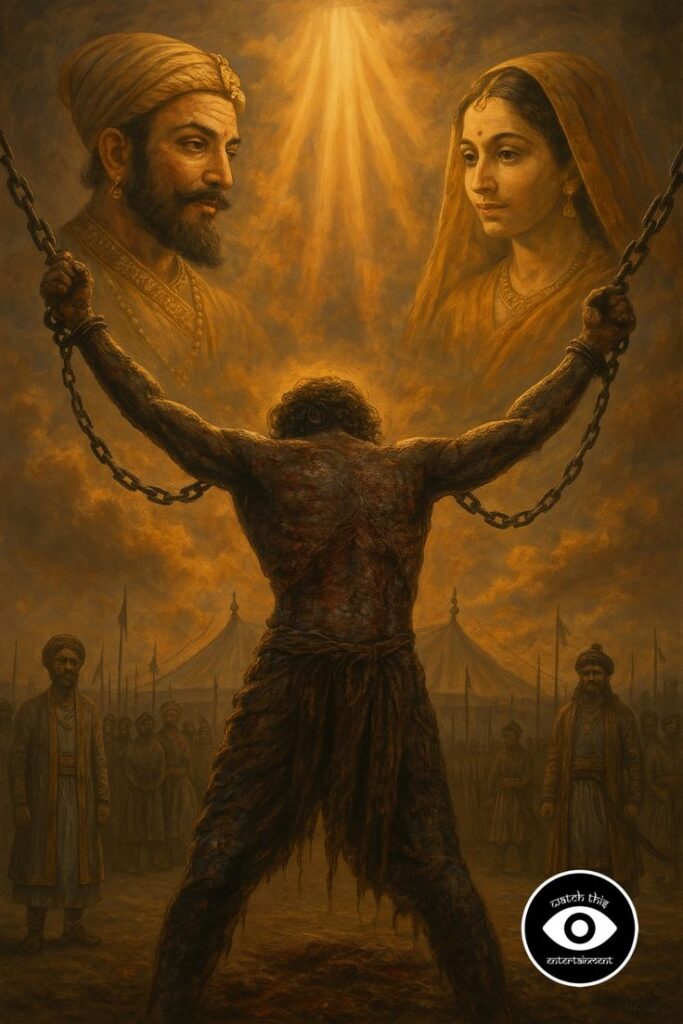
📆 Phase 1: Days 1–10 (Feb 19–Feb 28) – The Breaking Begins
- Day 1–3: Sambhaji and Kavi Kalash were paraded in chains. Aurangzeb demanded conversion and submission. Sambhaji remained silent.
- Day 4–6: Physical torture began—starvation, beatings, and mock trials. Kalash composed verses mocking the emperor.
- Day 7–10: Aurangzeb offered wealth, pardon, and titles. Sambhaji replied, “I am born to protect Dharma, not sell it.”
📆 Phase 2: Days 11–20 (Mar 1–Mar 10) – The Body Weakens, The Soul Rises
- Day 11–13: Sambhaji was denied sleep. His wounds were left untreated. Yet he recited shlokas and invoked Shivaji Maharaj’s legacy.
- Day 14–16: Aurangzeb’s generals begged him to end the torture. Aurangzeb insisted: “Break the lion, or break his bones.”
- Day 17–20: Sambhaji was offered a chance to write a letter of surrender. He wrote a verse praising Dharma and mocking tyranny.
📆 Phase 3: Days 21–30 (Mar 11–Mar 20) – The Final Offer
- Day 21–23: Aurangzeb sent religious scholars to debate Sambhaji. He responded with Sanskrit verses and philosophical arguments.
- Day 24–26: Kavi Kalash was tortured separately. He refused to speak. Sambhaji asked for Kalash’s release—Aurangzeb refused.
- Day 27–30: Sambhaji was offered exile. He said, “Better Tulapur’s soil than a Mughal throne.”
📆 Phase 4: Days 31–40 (Mar 21–Mar 30) – The Empire Trembles
- Day 31–33: News of Sambhaji’s torture spread across Maharashtra. Guerrilla attacks increased. Aurangzeb grew paranoid.
- Day 34–36: Sambhaji was blinded in one eye. He still recited Nrupalini, his Sanskrit epic.
- Day 37–40: Aurangzeb ordered public humiliation. Sambhaji was dressed in rags and mocked. He stood tall, silent, unbroken.
📆 Phase 5: Days 41–45 (Mar 31–Apr 4) – The Final Flame
- Day 41–42: Aurangzeb gave a final ultimatum: convert or die. Sambhaji replied, “I choose Dharma.”
- Day 43: Kavi Kalash was executed. Sambhaji performed a silent prayer.
- Day 44: Sambhaji was taken to Tulapur, the site chosen for execution.
- Day 45 (11 March 1689): Sambhaji Maharaj was beheaded. His body was mutilated and thrown into the Bhima river.
🧠 Legacy: The Roar That Never Died
Sambhaji Maharaj’s 45-day ordeal became a symbol of spiritual defiance. His refusal to convert, his loyalty to Dharma, and his silence in the face of tyranny inspired:
- Rajaram Maharaj’s resistance from Gingee Fort
- Shahu Maharaj’s rise and consolidation of Swarajya
- The Peshwa era, which expanded Maratha power across India
His martyrdom is commemorated at Tulapur and Vadhu Budruk, where his Samadhi stands as a beacon of courage.
🌟 Final Reflection: A King Who Chose Pain Over Compromise
Sambhaji Maharaj didn’t just die—he chose how to die. He chose Dharma over comfort, silence over surrender, and legacy over life.
“आबासाहेब, तुमचं आभाळाएवढं रूप पाहण्यासाठी मला डोळेच राहिले नाहीत ओ!”
(“Abasaheb, I no longer have eyes to witness your sky-like greatness!”)
“Empires may have swords, but Swarajya has saints. Sambhaji Maharaj was both.”
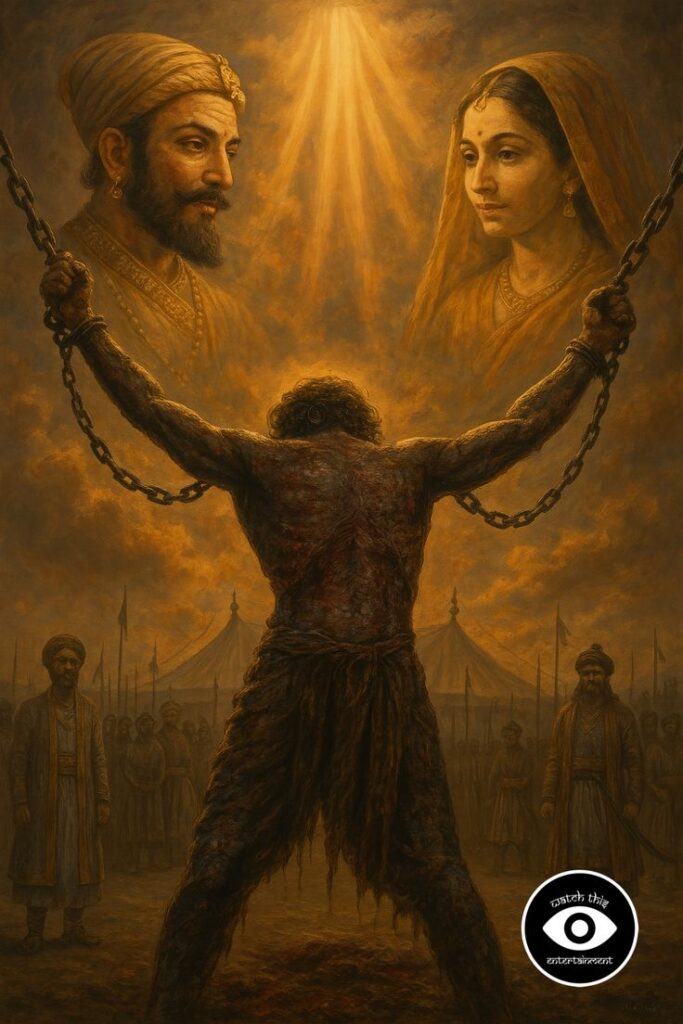
🌟 Final Conclusion: Sambhaji Maharaj – The Flame That Refused to Flicker
From the moment Sambhaji Maharaj ascended the throne in 1681, his reign was a relentless storm—fueled by courage, strategy, and an unshakable commitment to Hindavi Swarajya. Each chapter of his leadership was a battle not just against empires, but against betrayal, isolation, and the weight of legacy.
He fought the Mughals with guerrilla brilliance, forcing Aurangzeb into a two-decade Deccan quagmire. He challenged the Portuguese along the Konkan coast, proving that Swarajya was not landlocked—it was maritime. He built Padmadurg and launched the siege of Janjira, confronting the Siddis with naval defiance. He marched into Mysore, reclaiming ancestral ground and securing tribute from southern kings.
And then came Sangameshwar—the betrayal, the capture, and the 45 days of torture that tested not just his body, but his soul. Sambhaji Maharaj refused to convert, refused to surrender, and refused to speak a word that would dishonor his father Shivaji Maharaj, his Dharma, or his people.
His final words—spoken with blinded eyes—echoed with reverence:
“आबासाहेब, तुमचं आभाळाएवढं रूप पाहण्यासाठी मला डोळेच राहिले नाहीत ओ!”
(“Abasaheb, I no longer have eyes to witness your sky-like greatness!”)
On 11 March 1689, at Tulapur, Sambhaji Maharaj was executed. But his death was not an end—it was a beginning. His martyrdom ignited the Maratha resurgence, inspired Rajaram Maharaj’s resistance, and laid the emotional foundation for the Peshwa era.
🔱 What Sambhaji Maharaj’s Legacy Teaches Us
- Leadership is forged in fire, not comfort
- Loyalty is louder than betrayal
- Silence can be more powerful than surrender
- Martyrdom can be more enduring than monarchy
Sambhaji Maharaj was not just a king—he was a flame, a verse, a roar, and a promise. His story is not just history—it is heritage.
📣 Call to Action for Your Readers
Let this blog be more than a tribute—make it a movement. Share Sambhaji Maharaj’s story. Quote his courage. Celebrate his legacy. Let every post, reel, and caption carry the fire of Swarajya.
“Empires fall. Betrayers fade. But the roar of a true Chhatrapati echoes forever.”
Internal links: 1.https://historyverse7.com/bal-gangadhar-tilak/
External links: 1.https://www.britannica.com/biography/Sambhaji
📘FAQ: Sambhaji Maharaj – The Lion of Swarajya
1. Why is Sambhaji Maharaj considered one of the bravest rulers in Indian history?
Answer:
Sambhaji Maharaj is revered for his unmatched courage in resisting the Mughal Empire, especially Emperor Aurangzeb. Despite facing betrayal, torture, and overwhelming odds, he never surrendered his principles. His refusal to convert to Islam during 45 days of brutal captivity and his martyrdom at Tulapur made him a symbol of Hindavi Swarajya, Dharma, and unbreakable leadership.
2. What were Sambhaji Maharaj’s major military campaigns?
Answer:
Between 1681 and 1689, Sambhaji Maharaj led four major campaigns:
Against the Mughals: Defended Swarajya from Aurangzeb’s Deccan invasion
Against the Portuguese: Raided Goa and disrupted colonial control
Siege of Janjira: Challenged the Siddi stronghold with naval innovation
Mysore Campaign: Secured tribute from Chikka Devaraja and expanded Maratha influence
Each campaign showcased his guerrilla brilliance, naval strategy, and diplomatic acumen.
3. Who betrayed Sambhaji Maharaj and how was he captured?
Answer:
Sambhaji Maharaj was betrayed by Ganoji Shirke, his brother-in-law, who revealed his location at Sangameshwar to Mughal forces. On 1 February 1689, Sambhaji was ambushed and captured by Mukarrab Khan. Despite being surrounded by 150 loyal warriors, including Kavi Kalash and Maloji Ghorpade, the betrayal led to his imprisonment and eventual execution.
4.What were Sambhaji Maharaj’s final words?
Answer:
Though exact records are scarce, folklore attributes this emotional line to Sambhaji Maharaj after being blinded during torture:
These words, spoken in reverence to Shivaji Maharaj, reflect Sambhaji’s emotional depth, spiritual strength, and unwavering pride in his lineage.
5.How did Sambhaji Maharaj’s death impact the Maratha Empire?
Answer:
Sambhaji Maharaj’s martyrdom became a turning point in Maratha history. His sacrifice:
Inspired Rajaram Maharaj’s resistance from Gingee Fort
Strengthened guerrilla warfare tactics across Maharashtra
Laid the emotional foundation for the Peshwa era, which expanded Maratha power across India
His death didn’t break Swarajya—it ignited it.
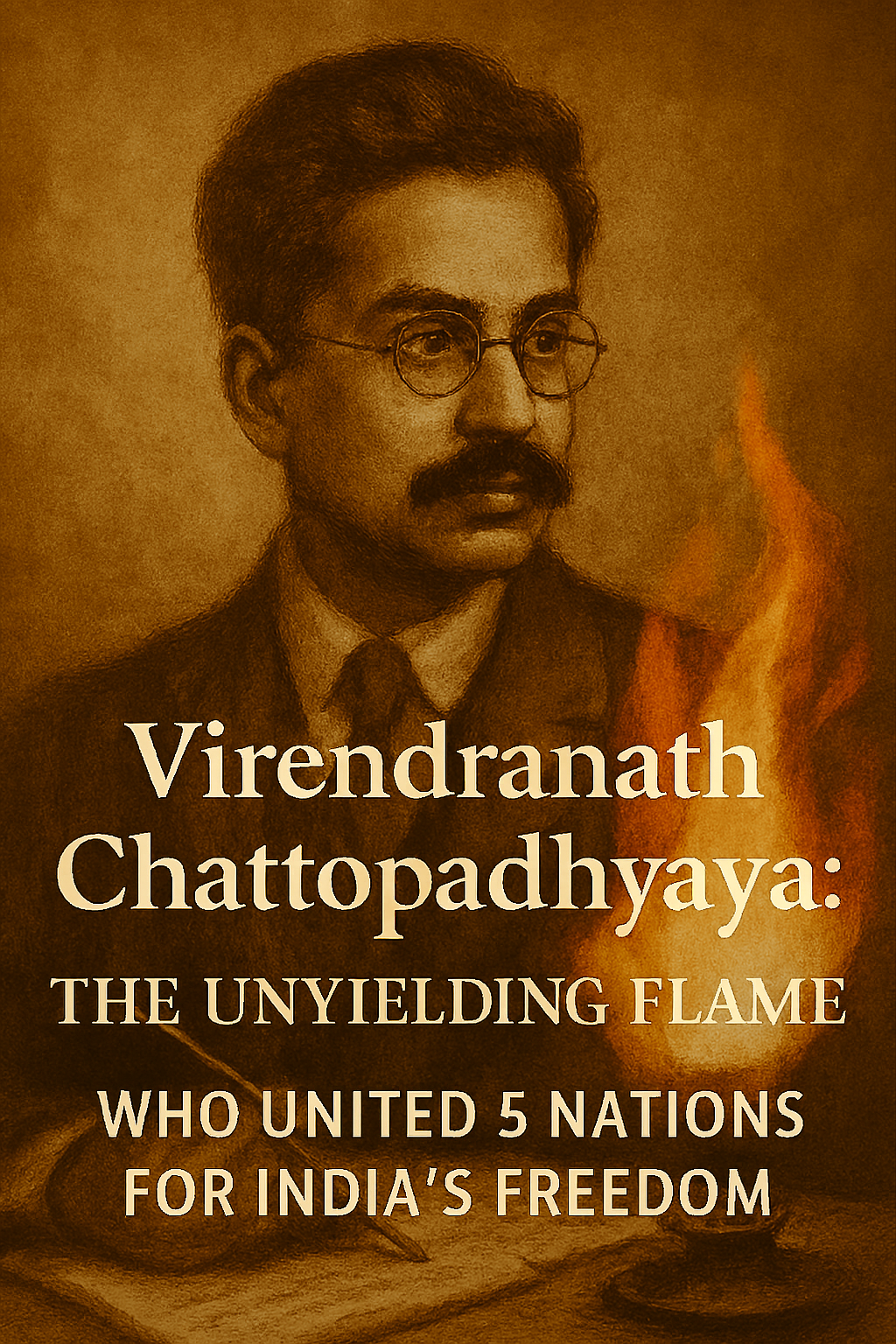
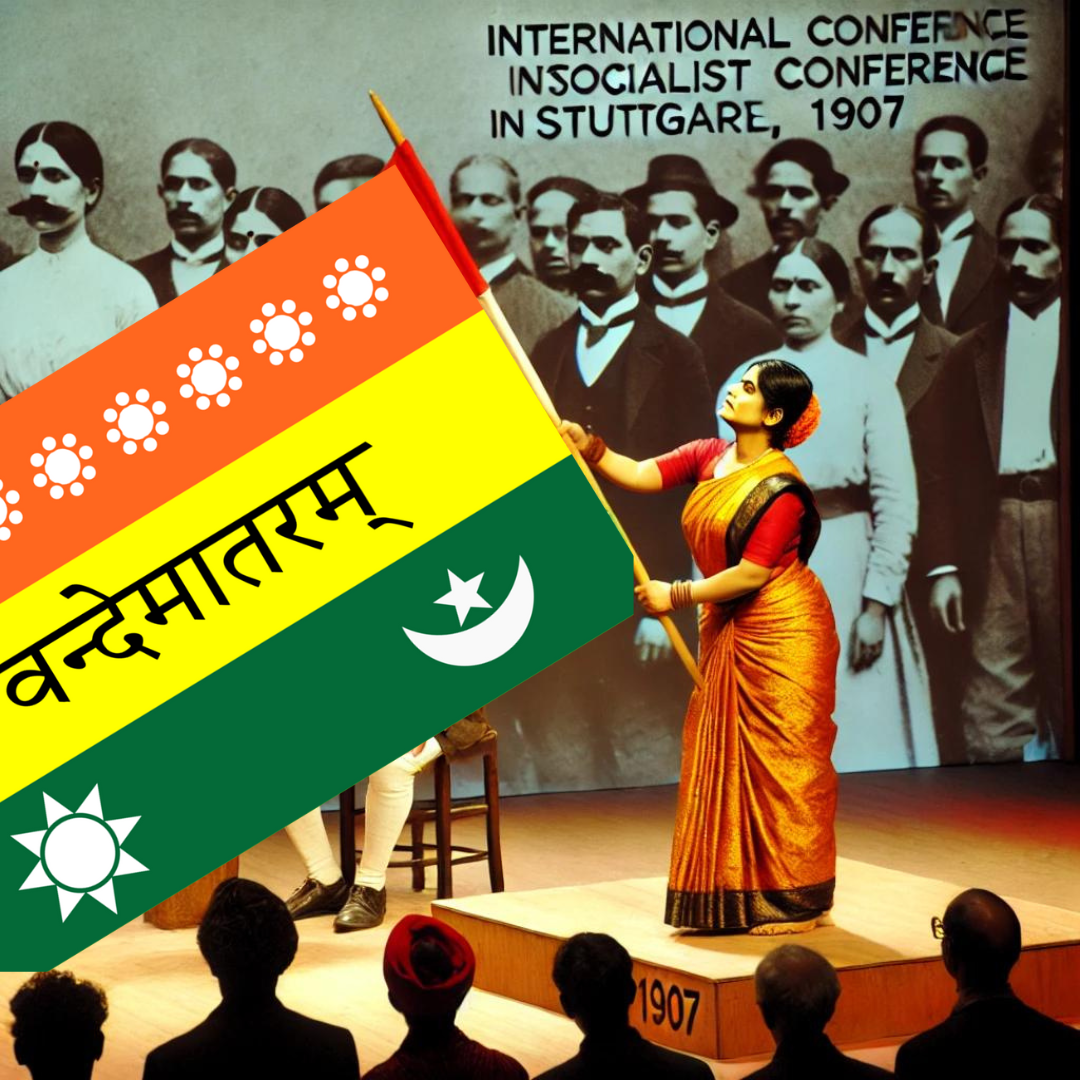
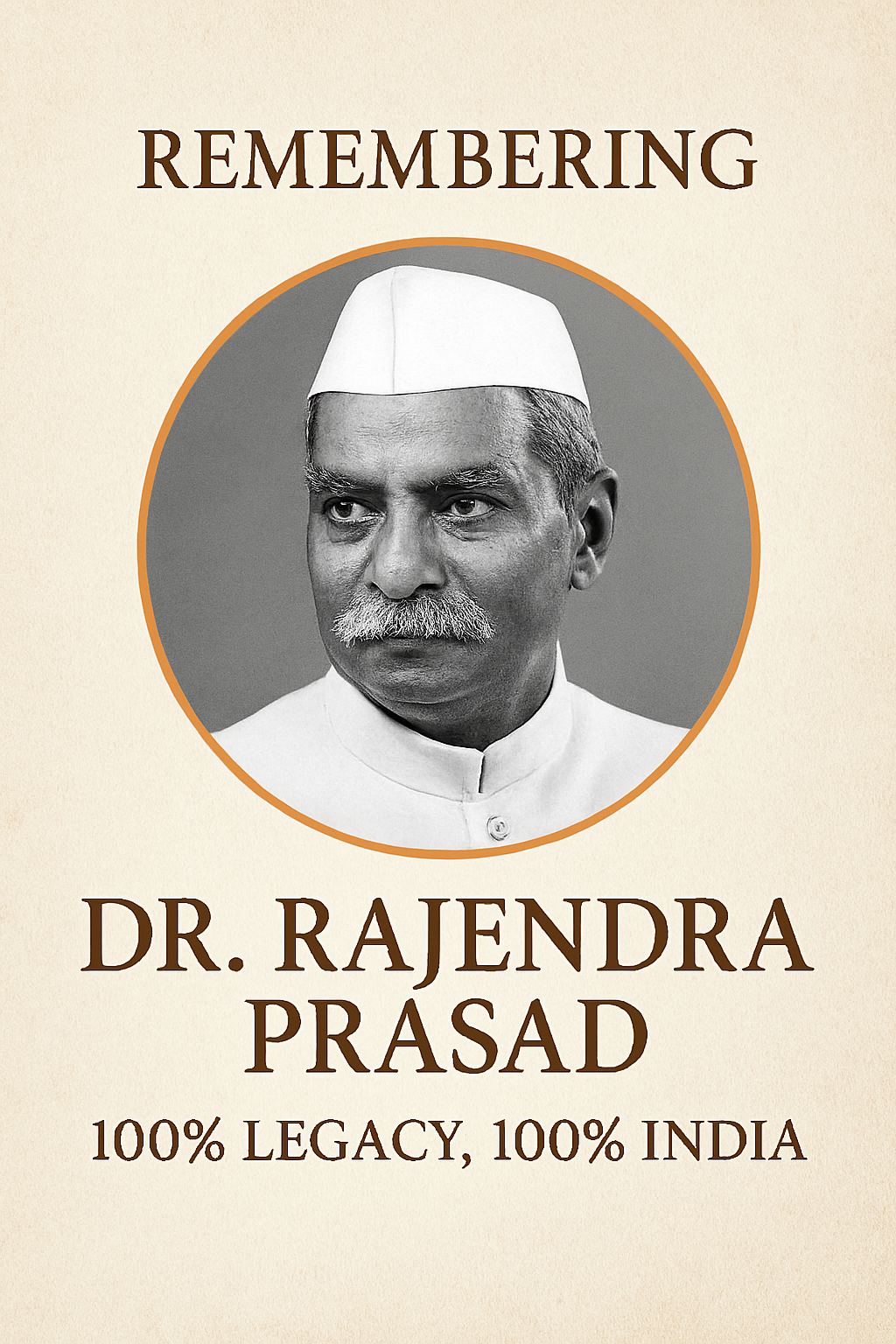
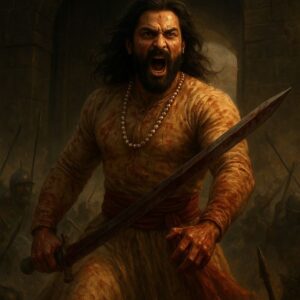
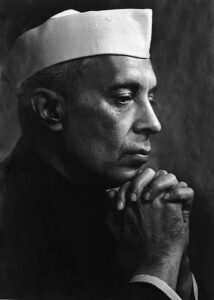
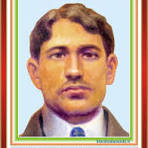
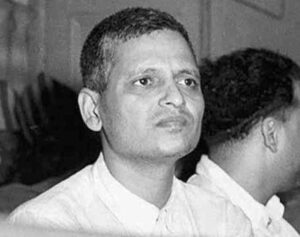
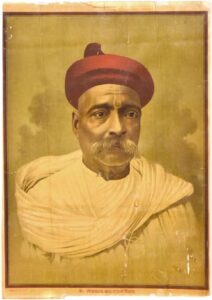
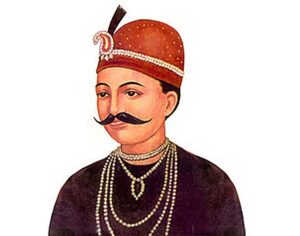
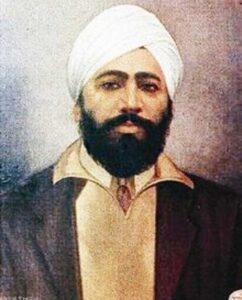
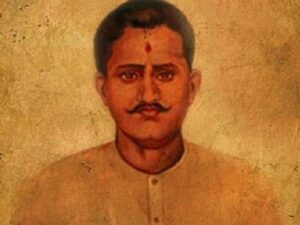
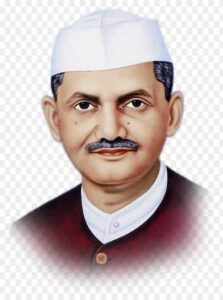
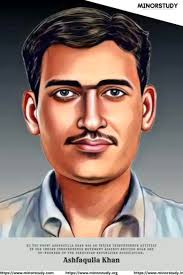
2 comments